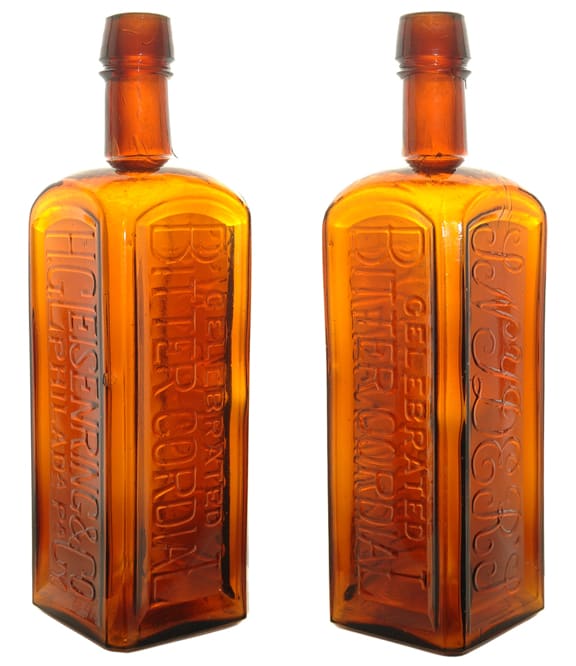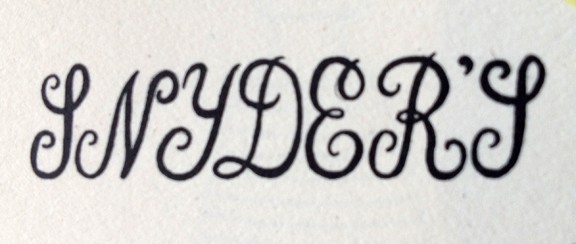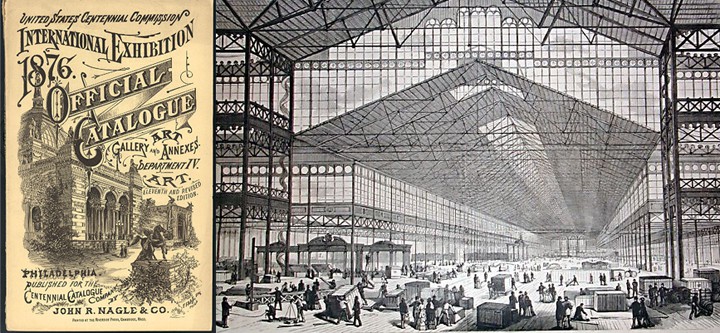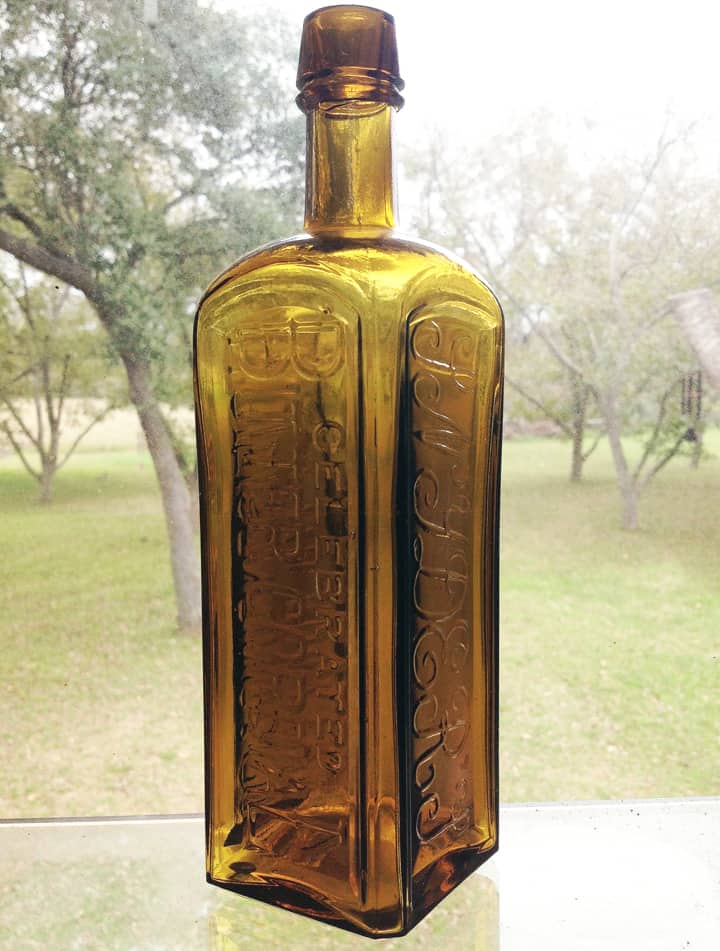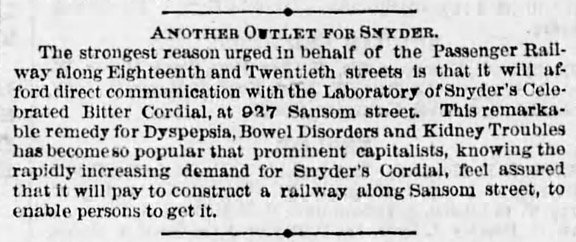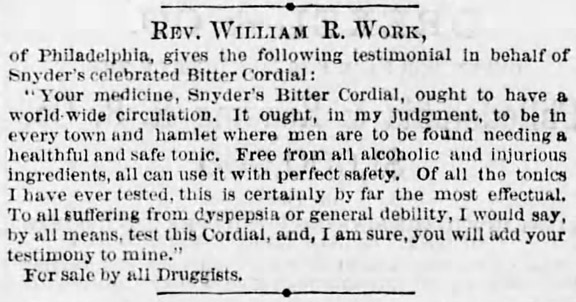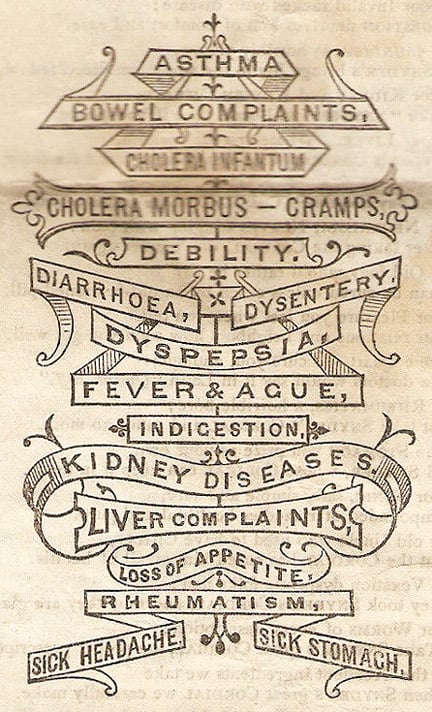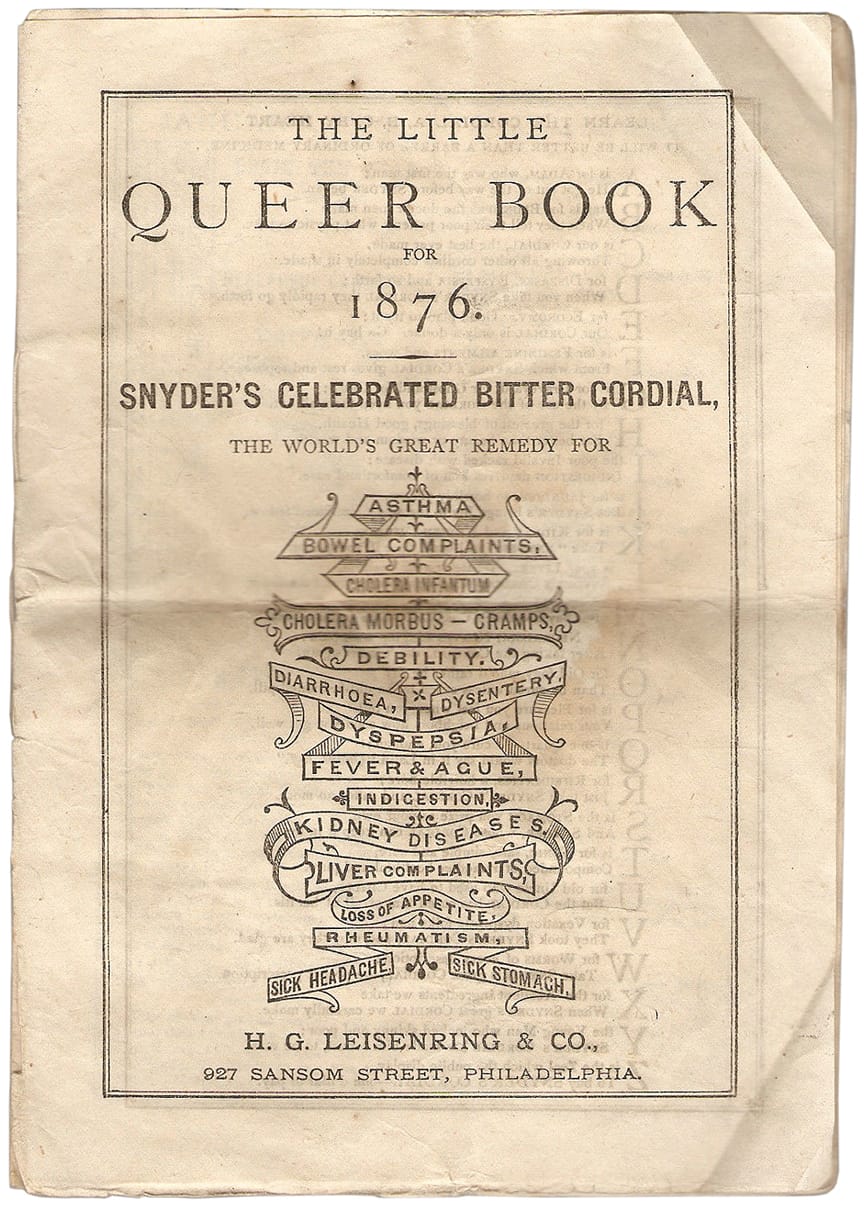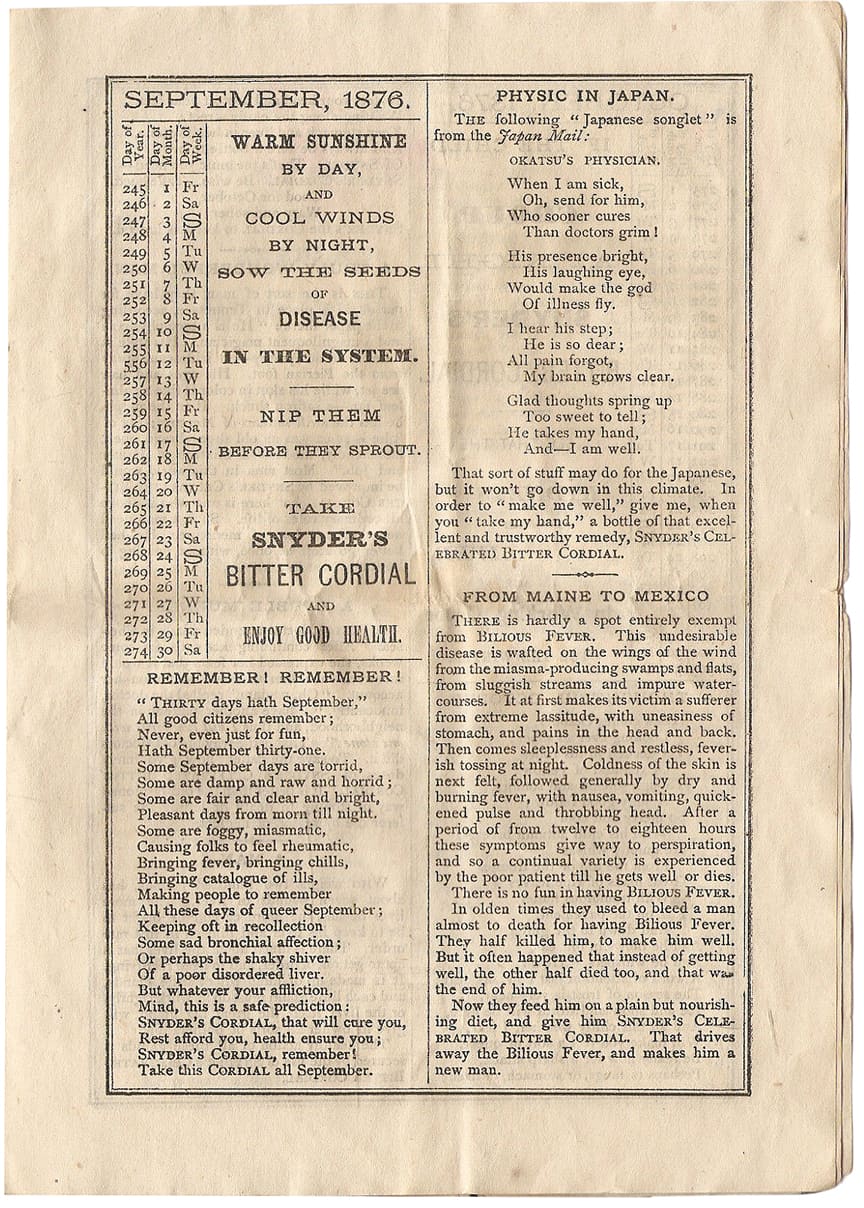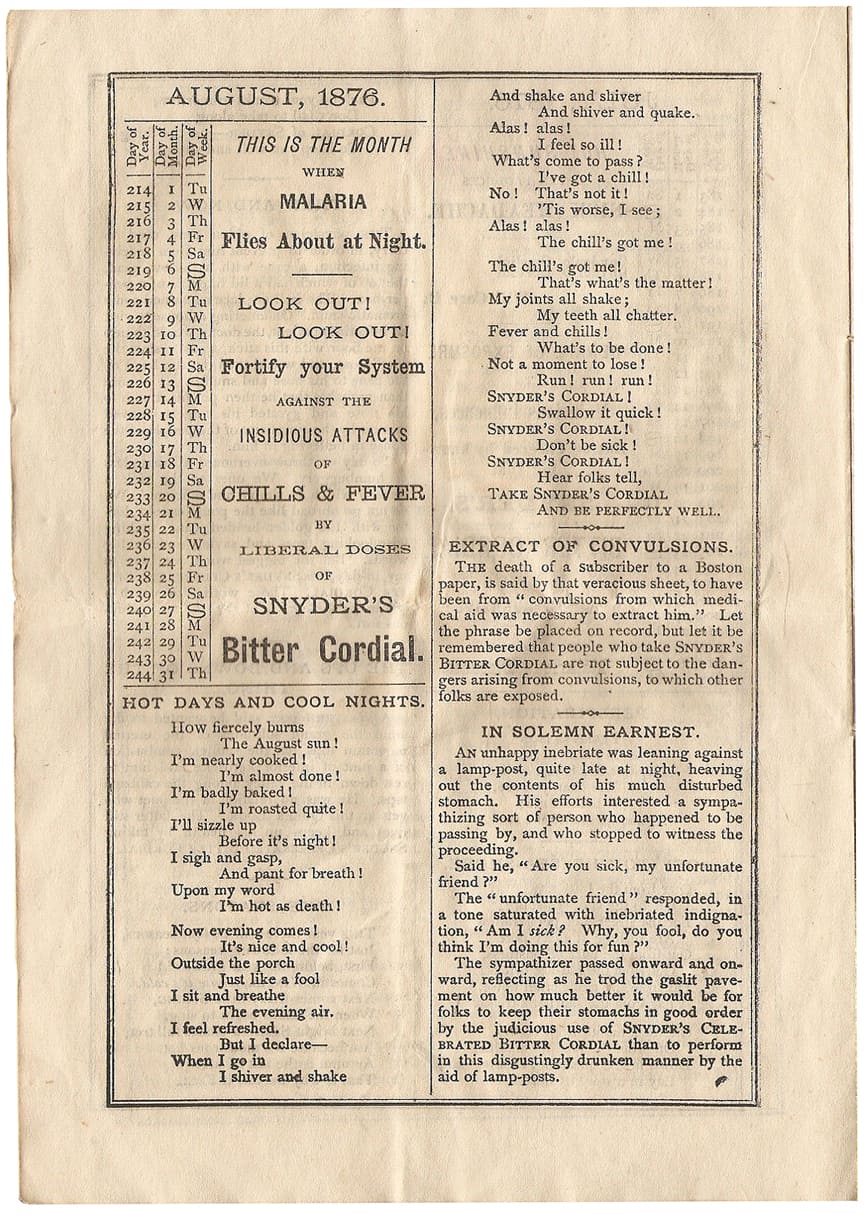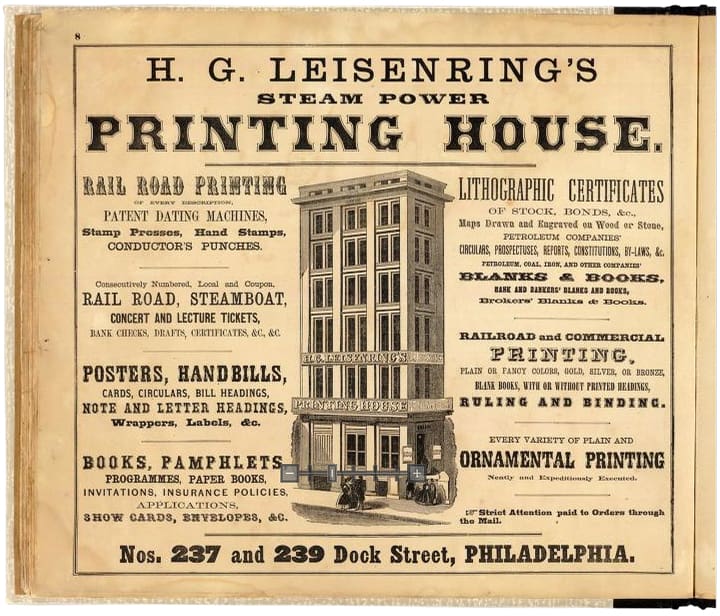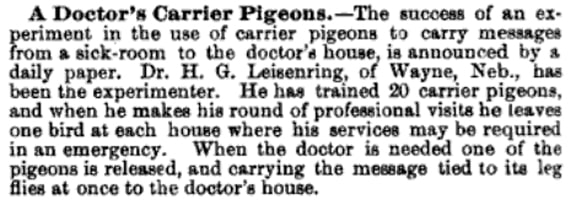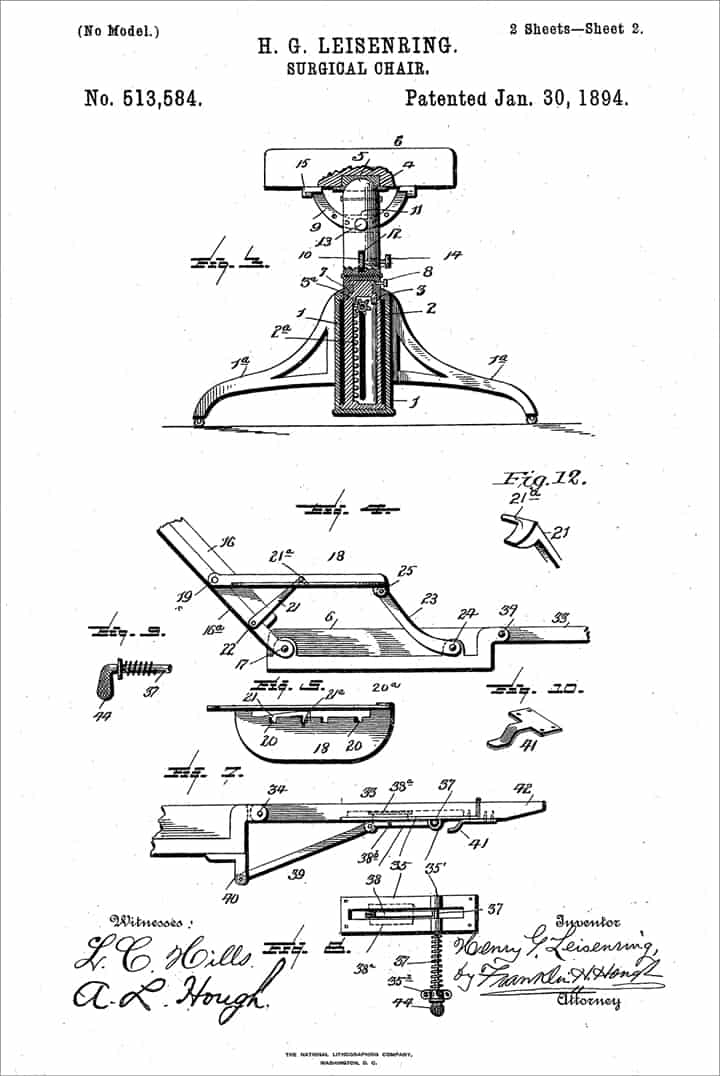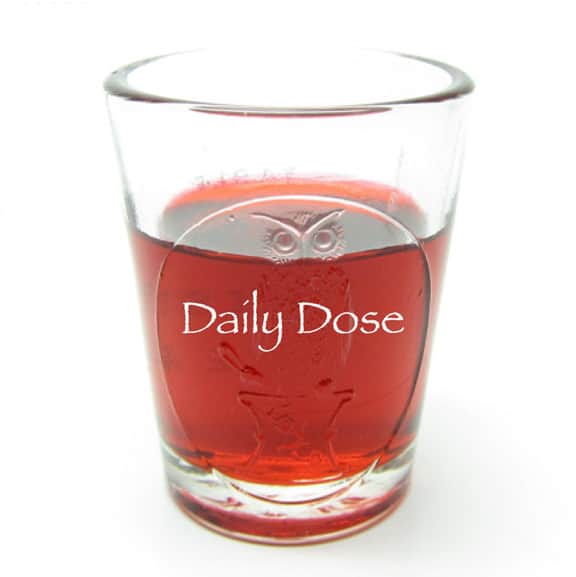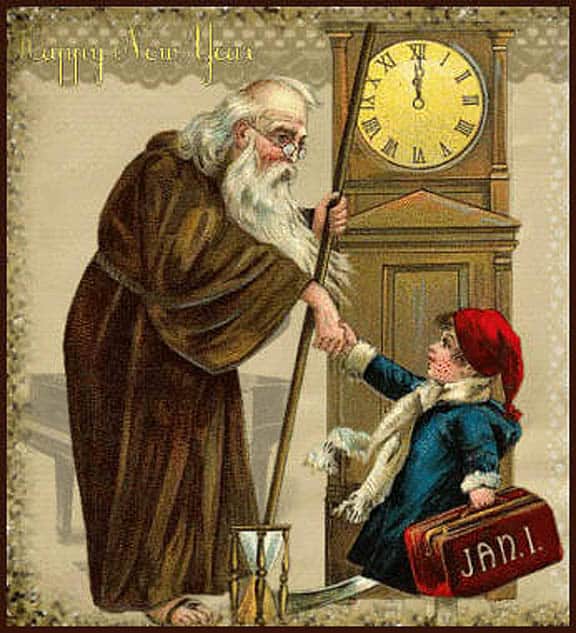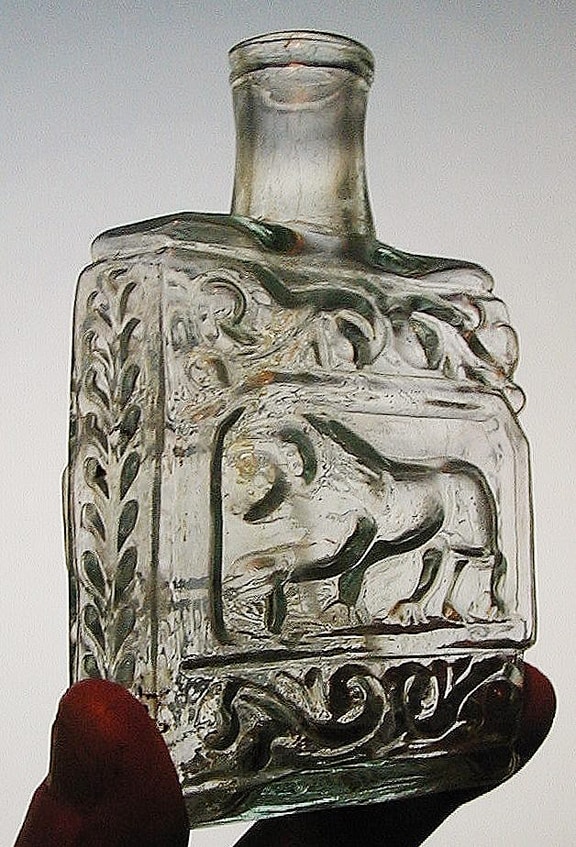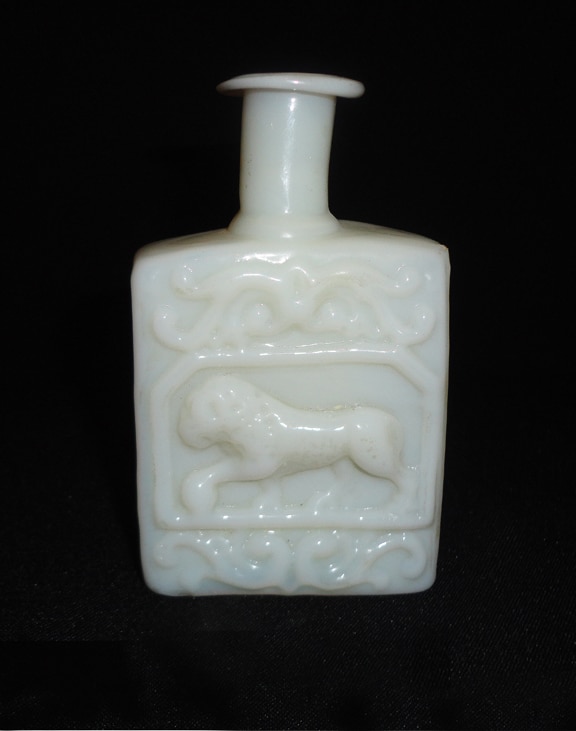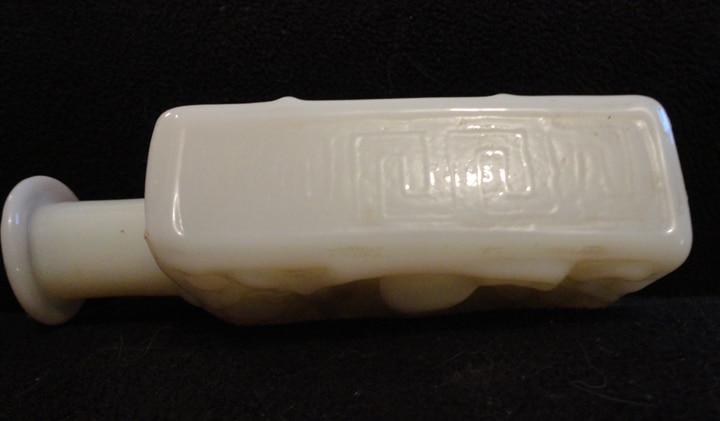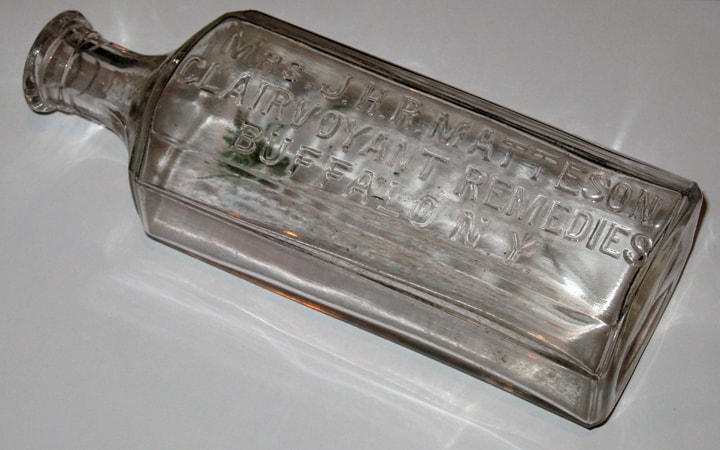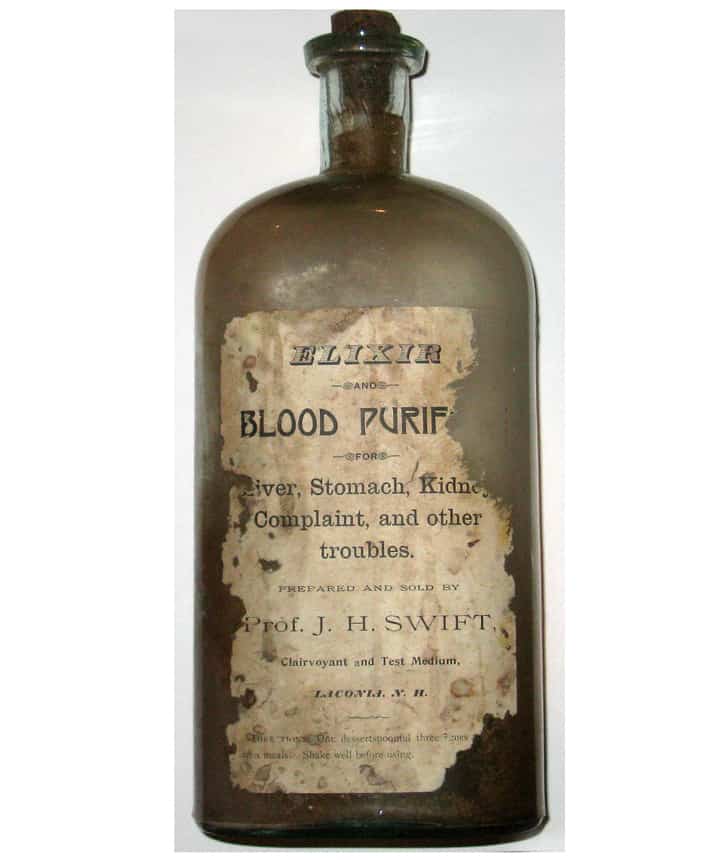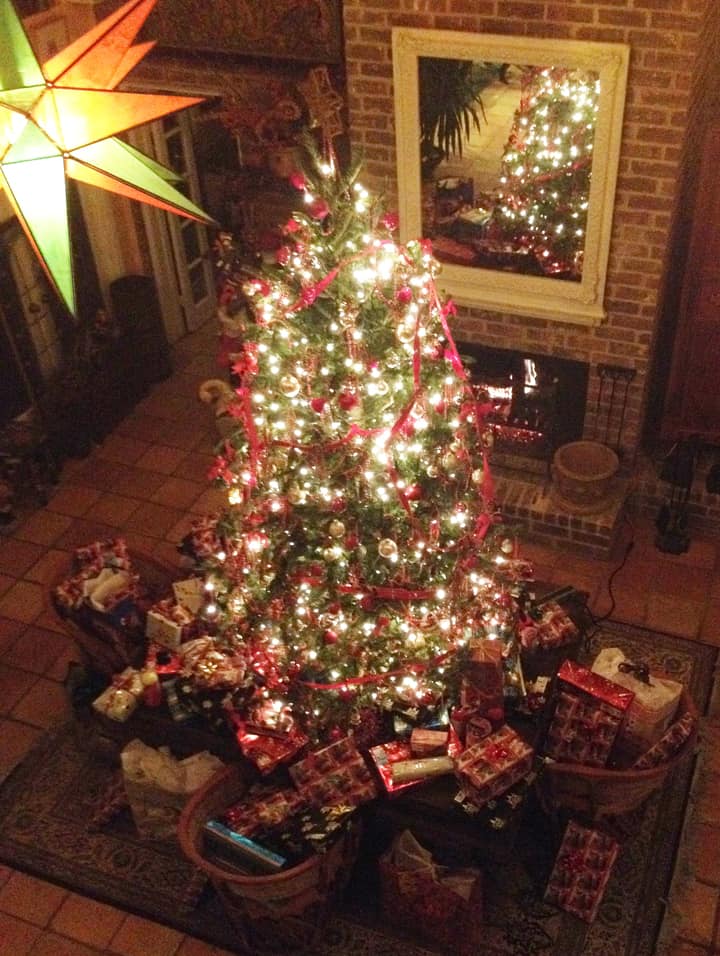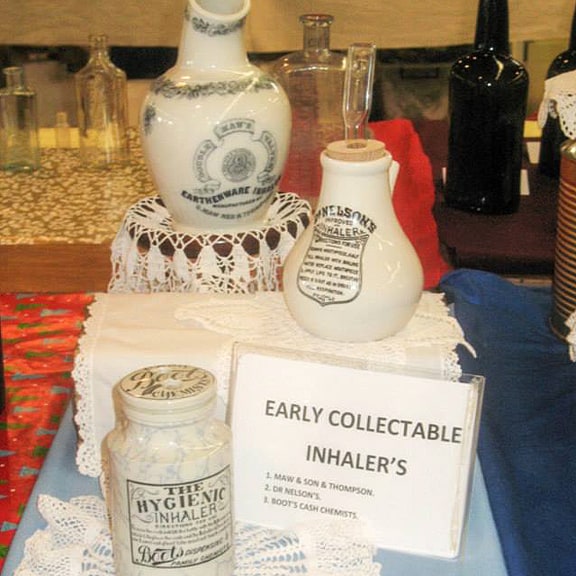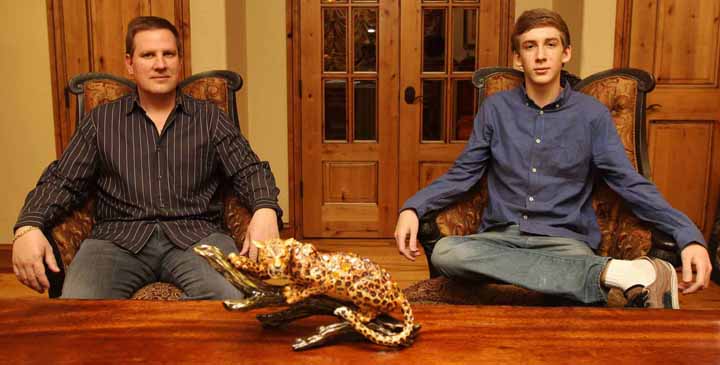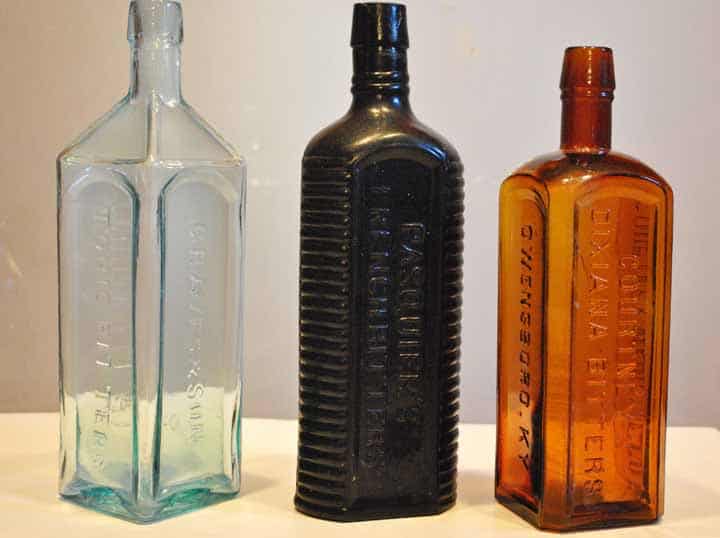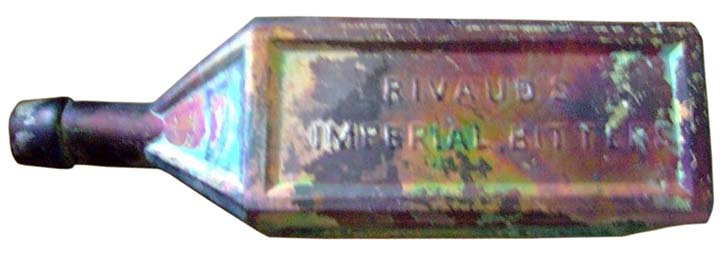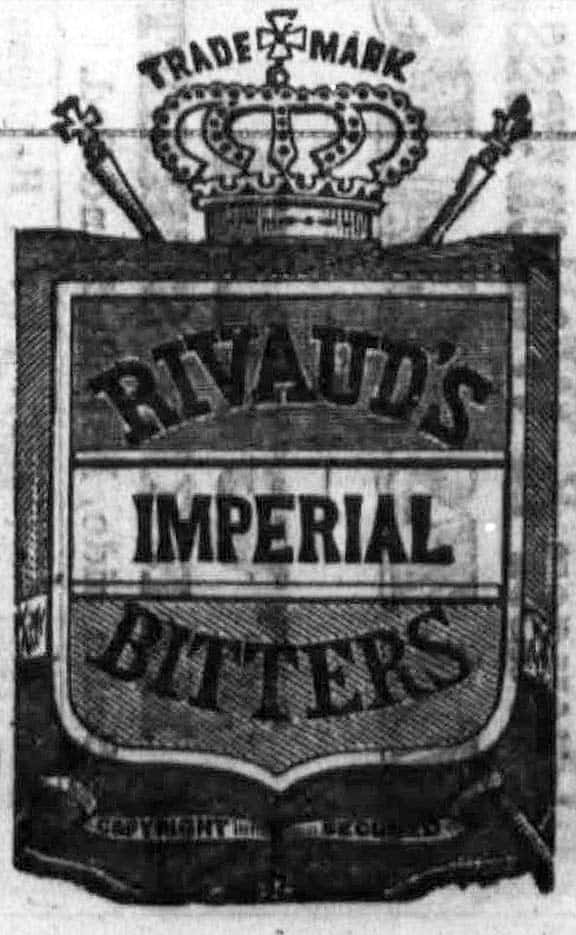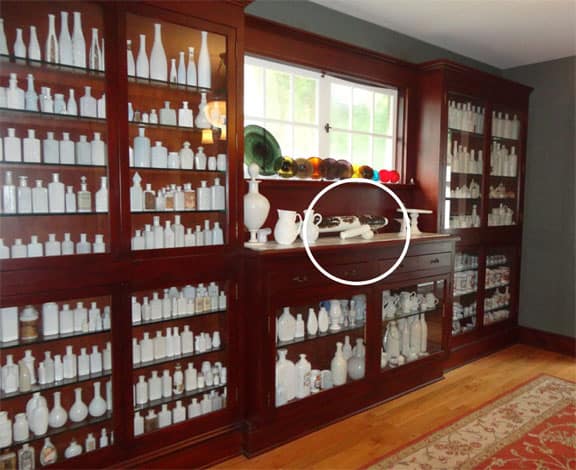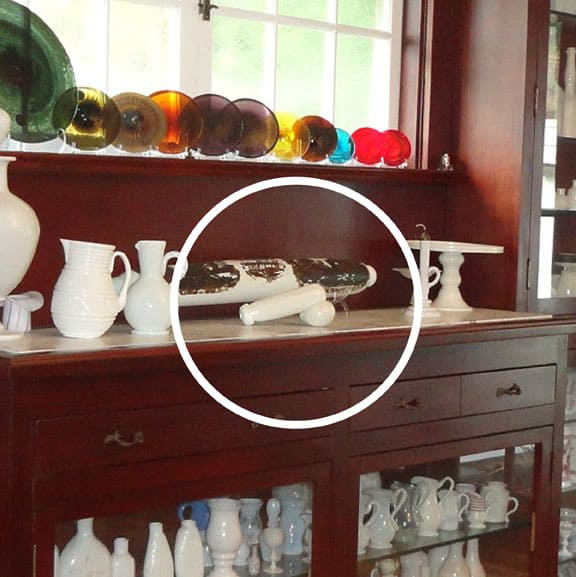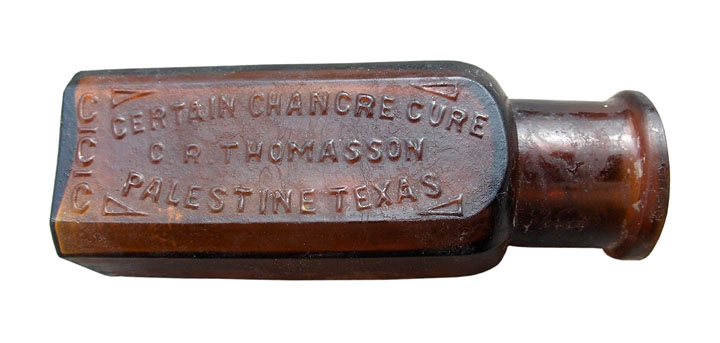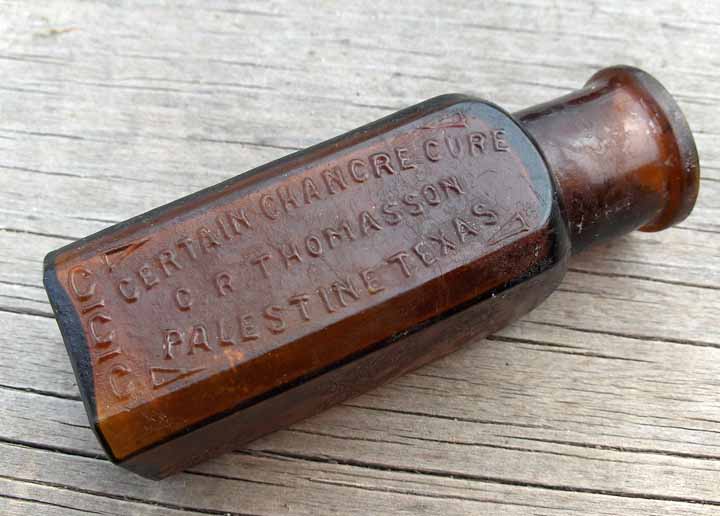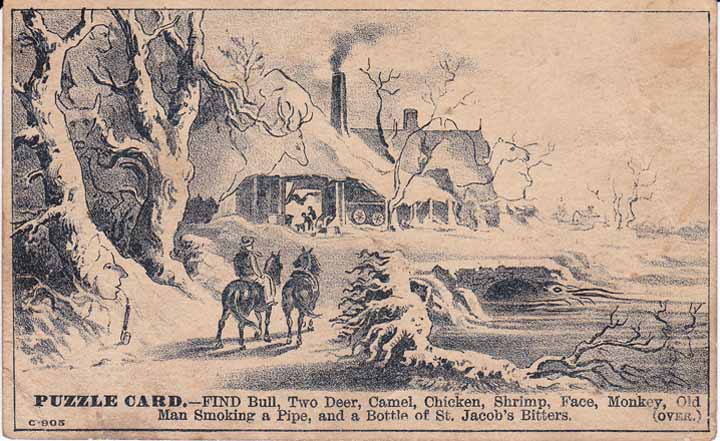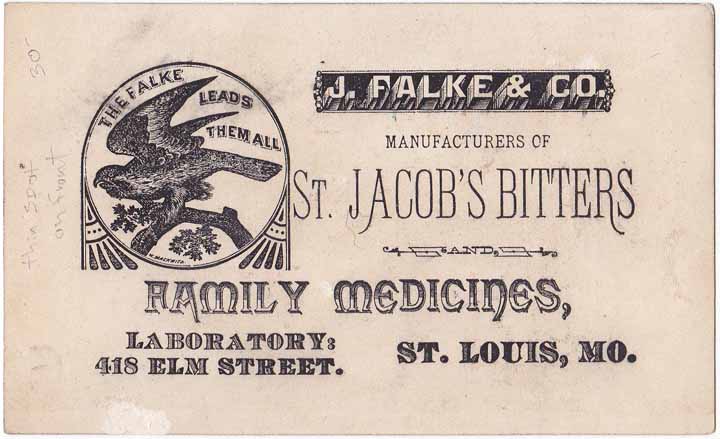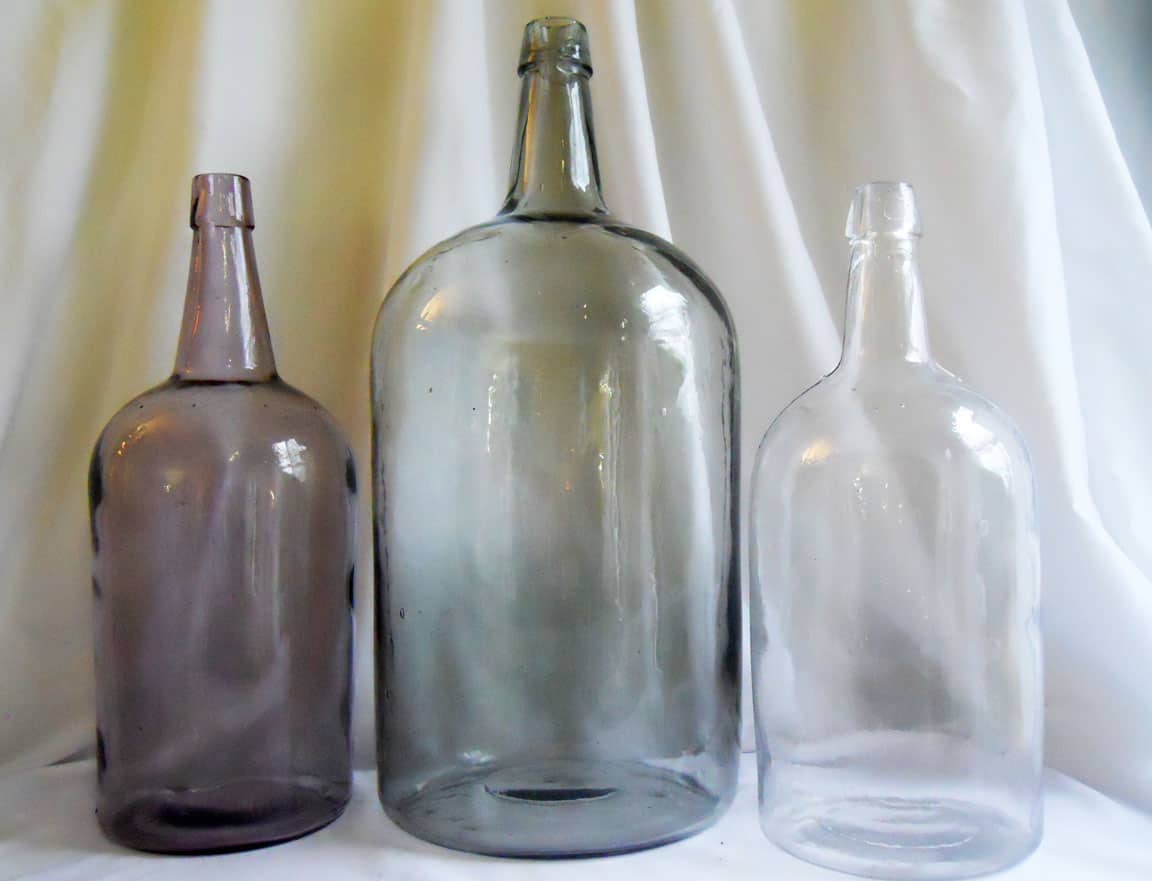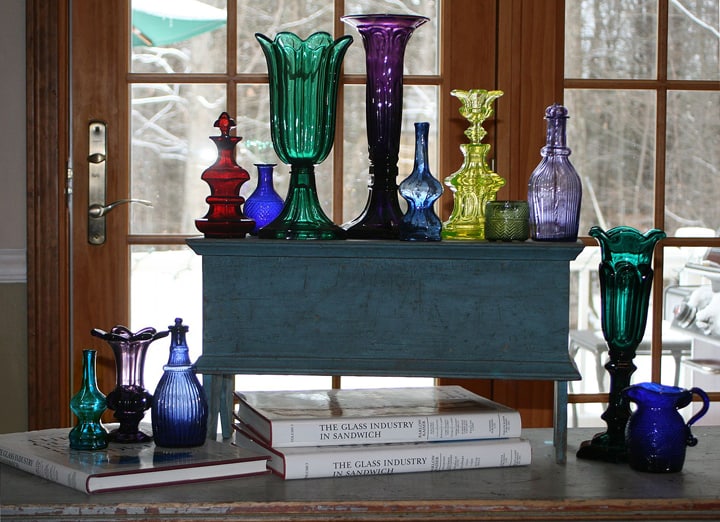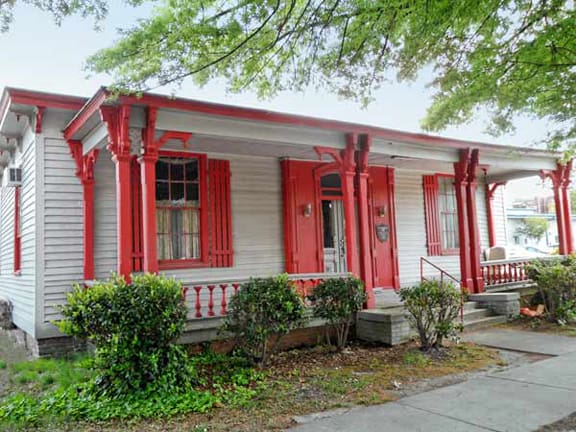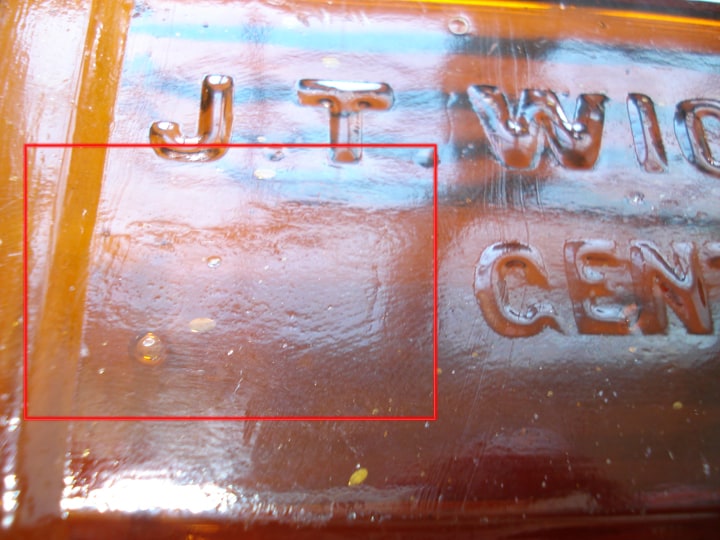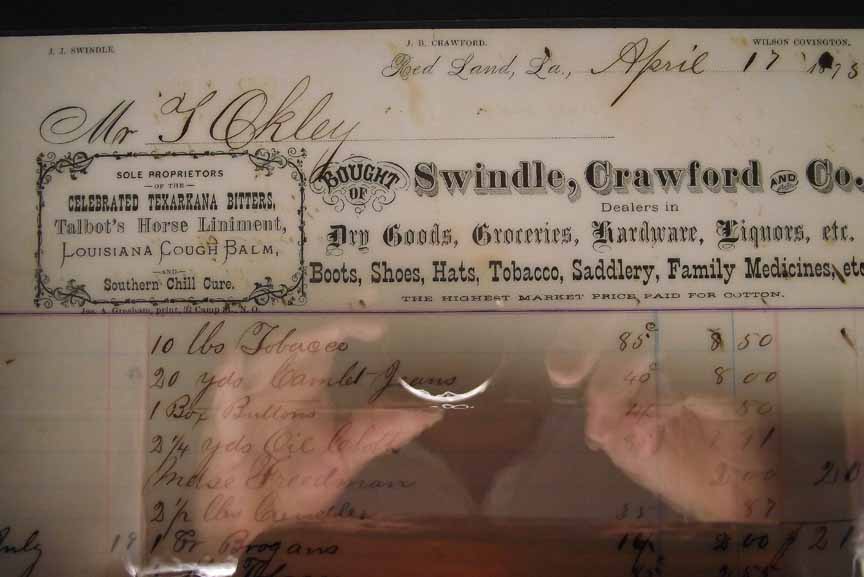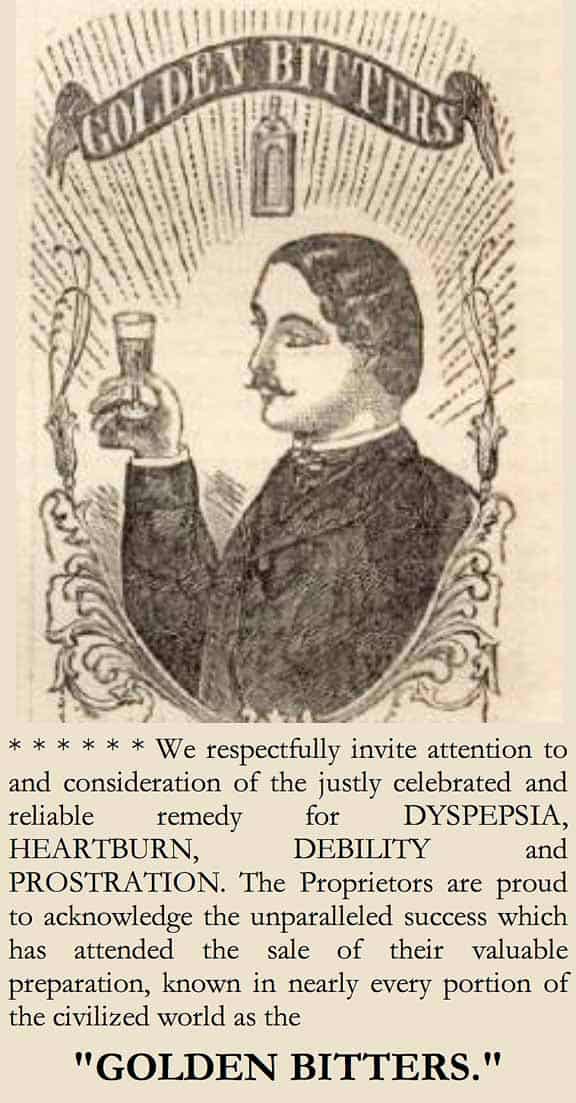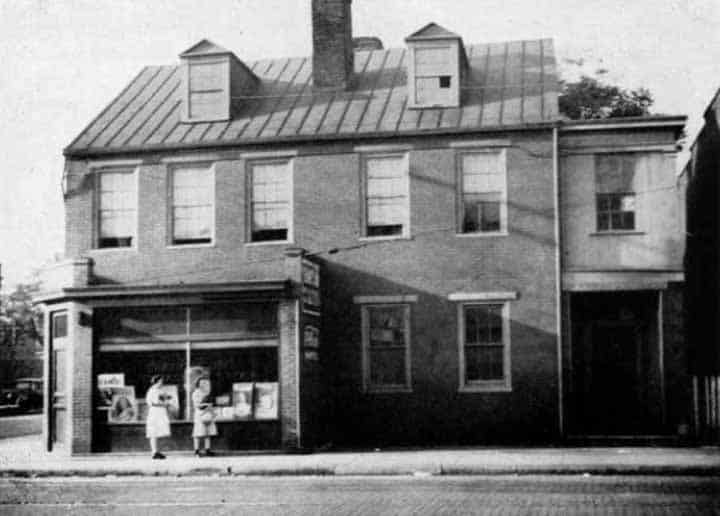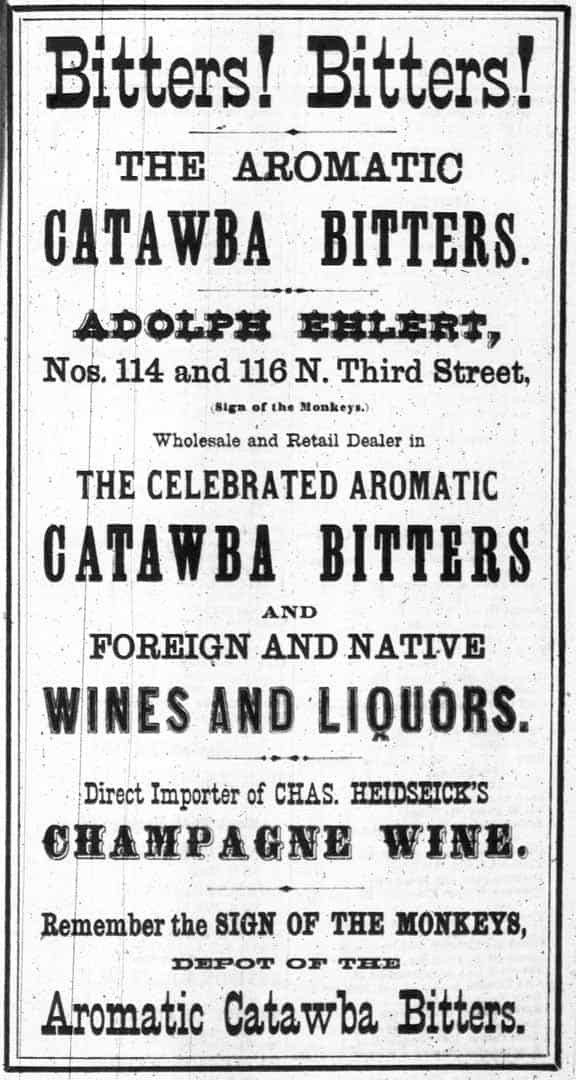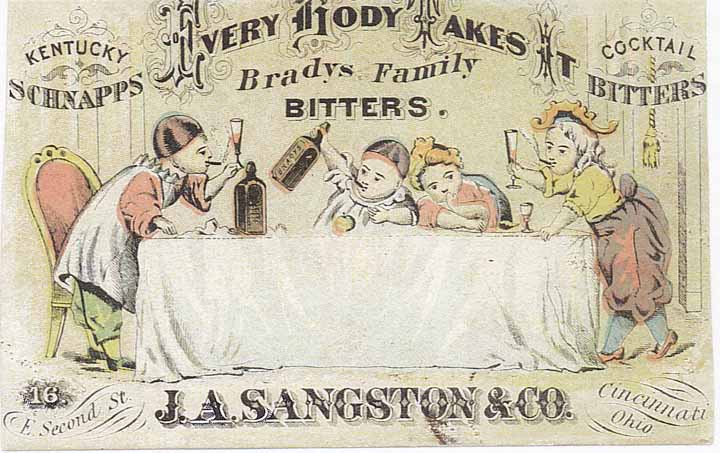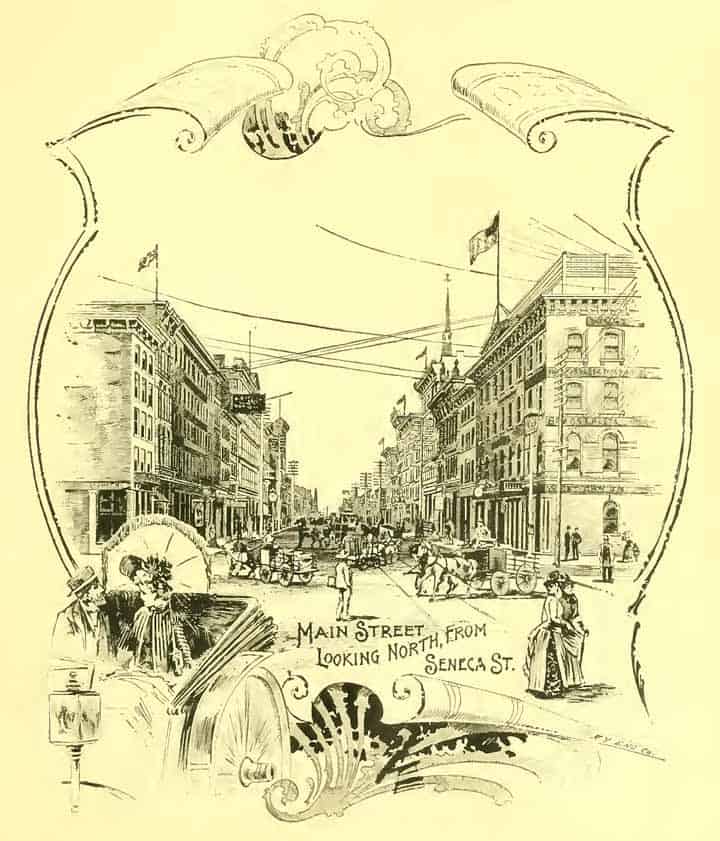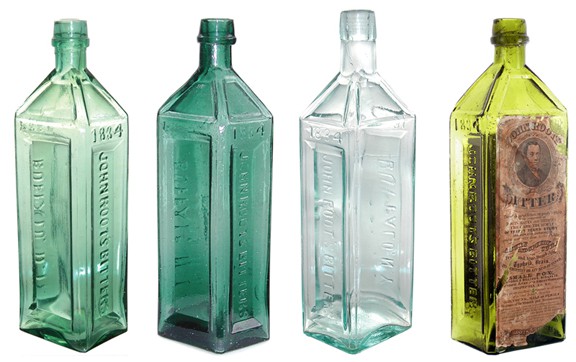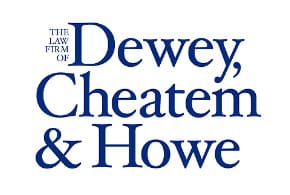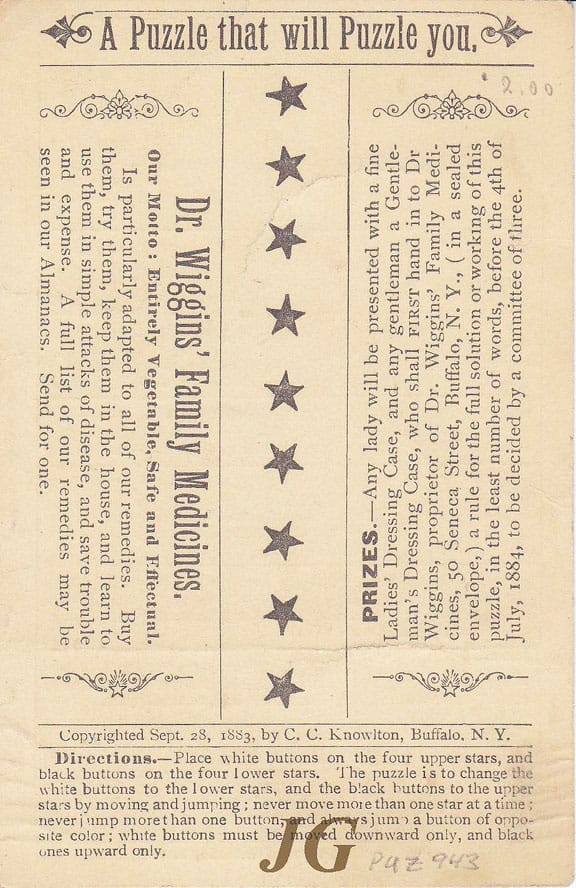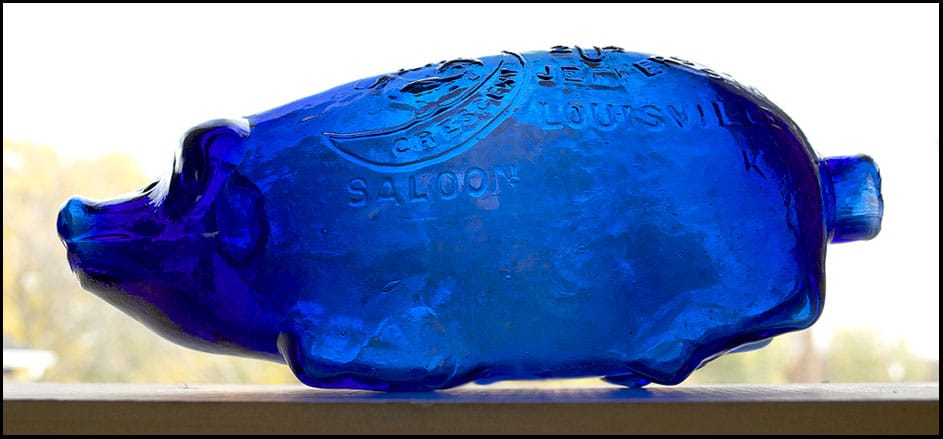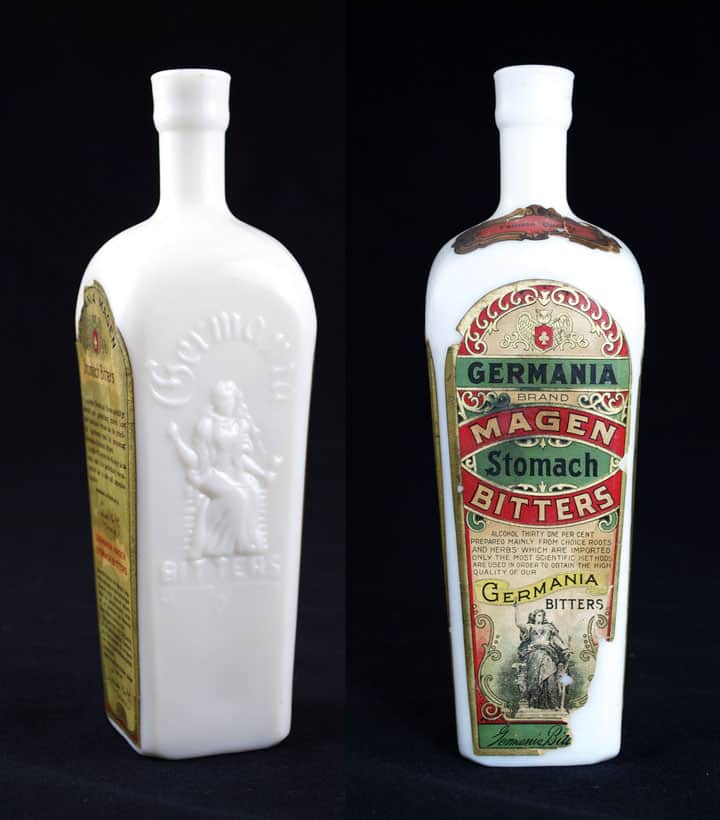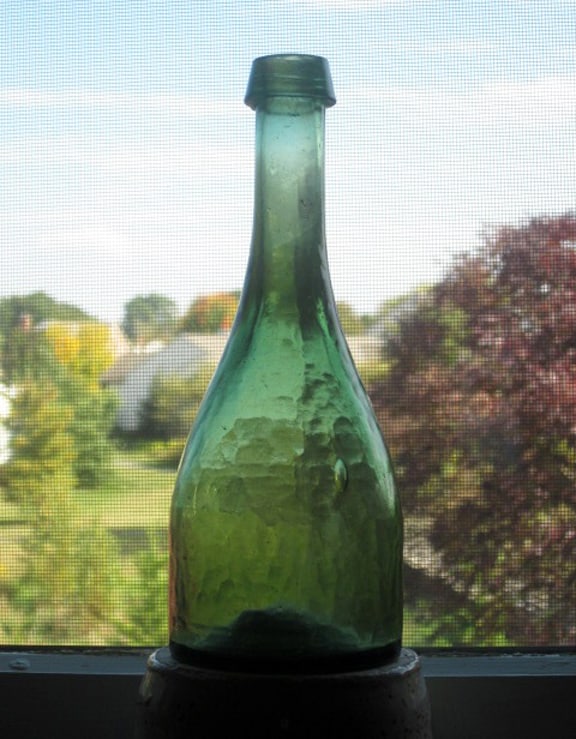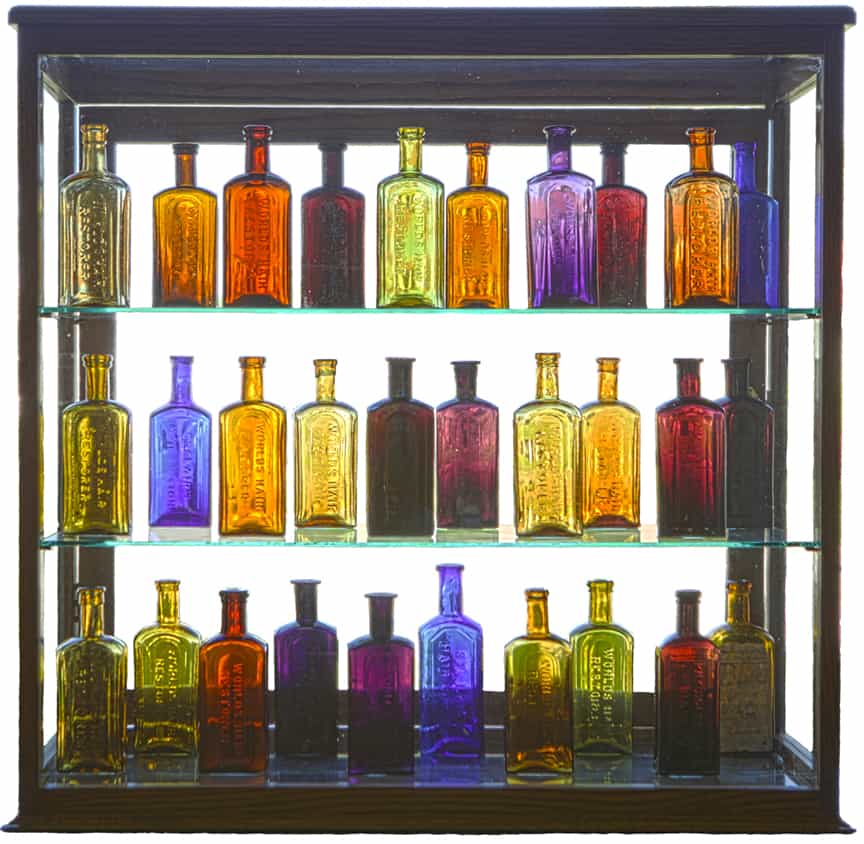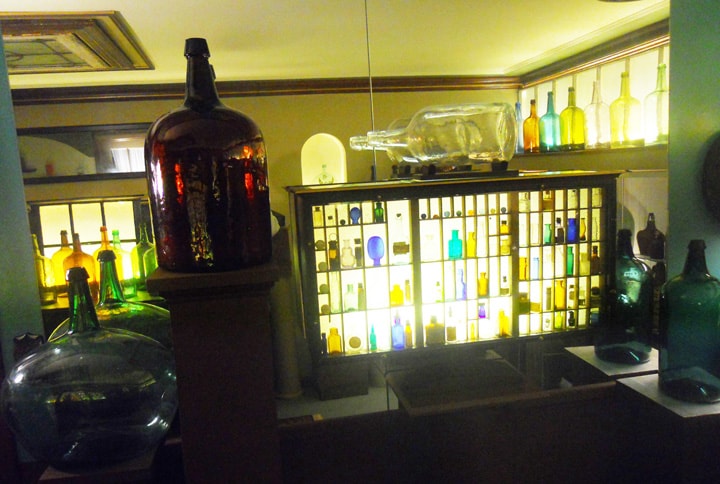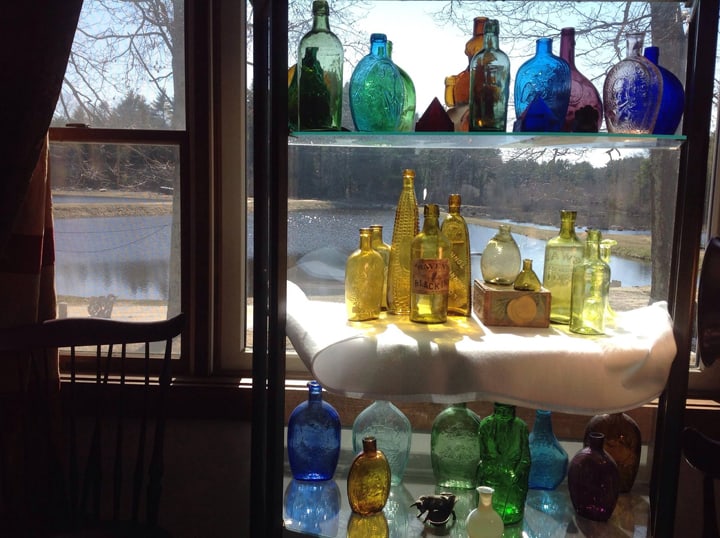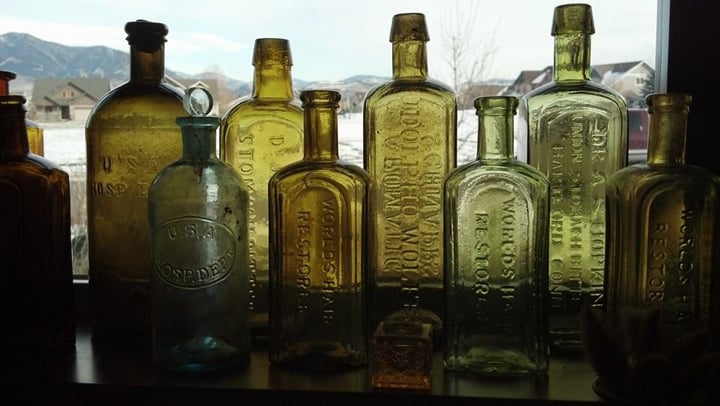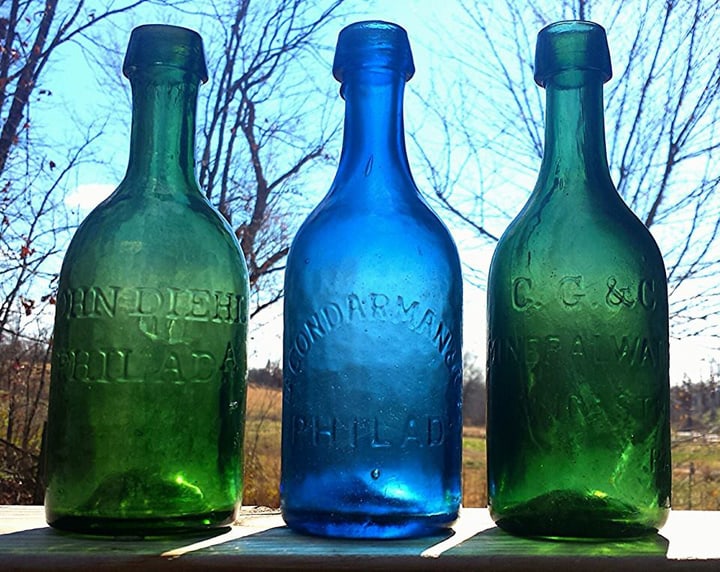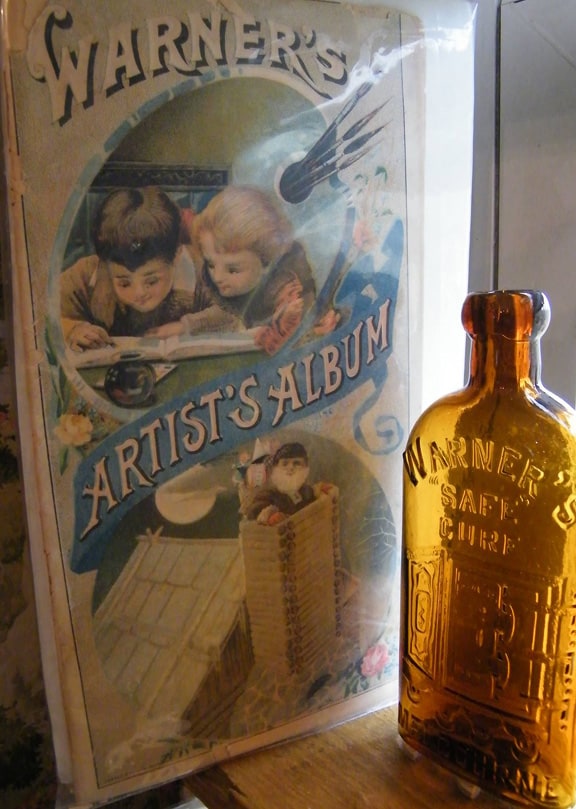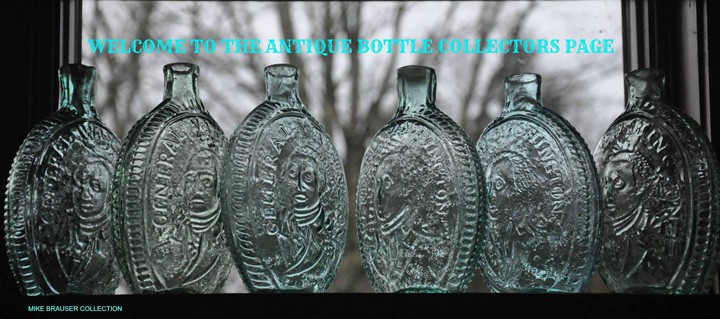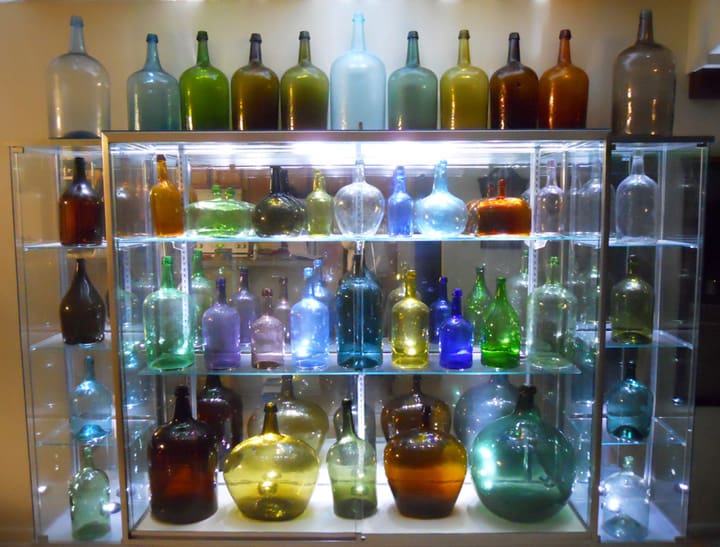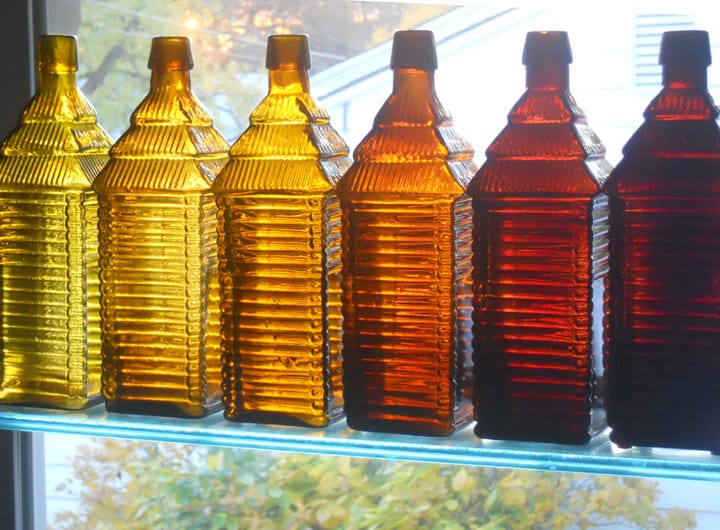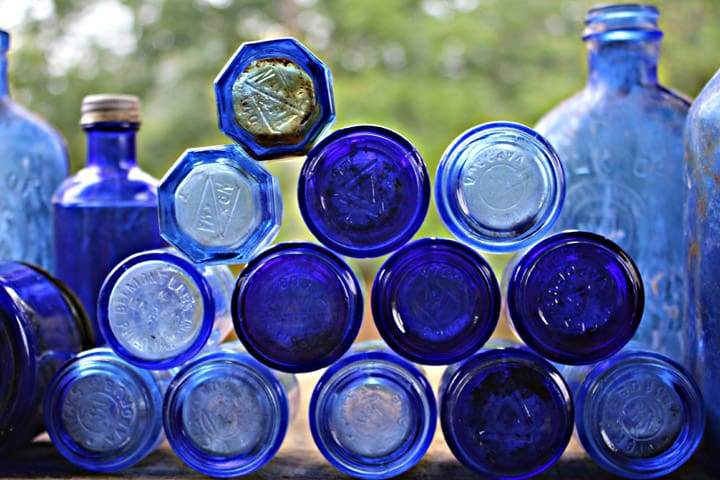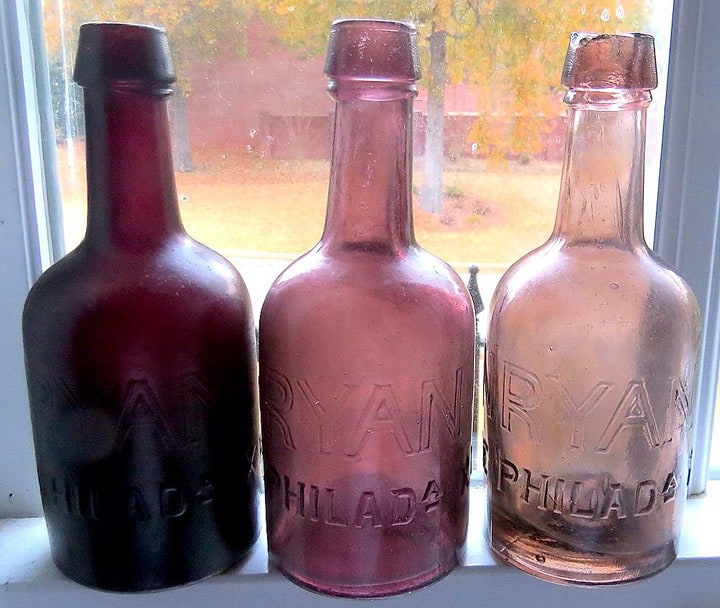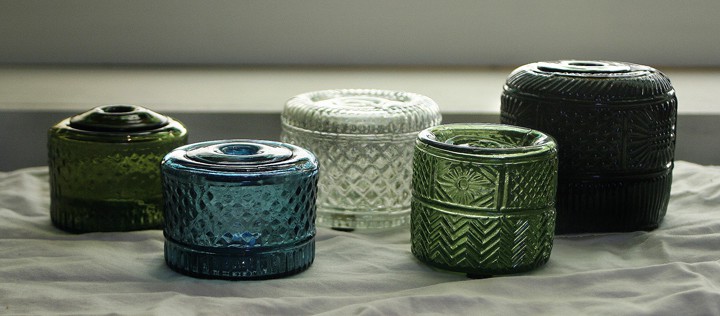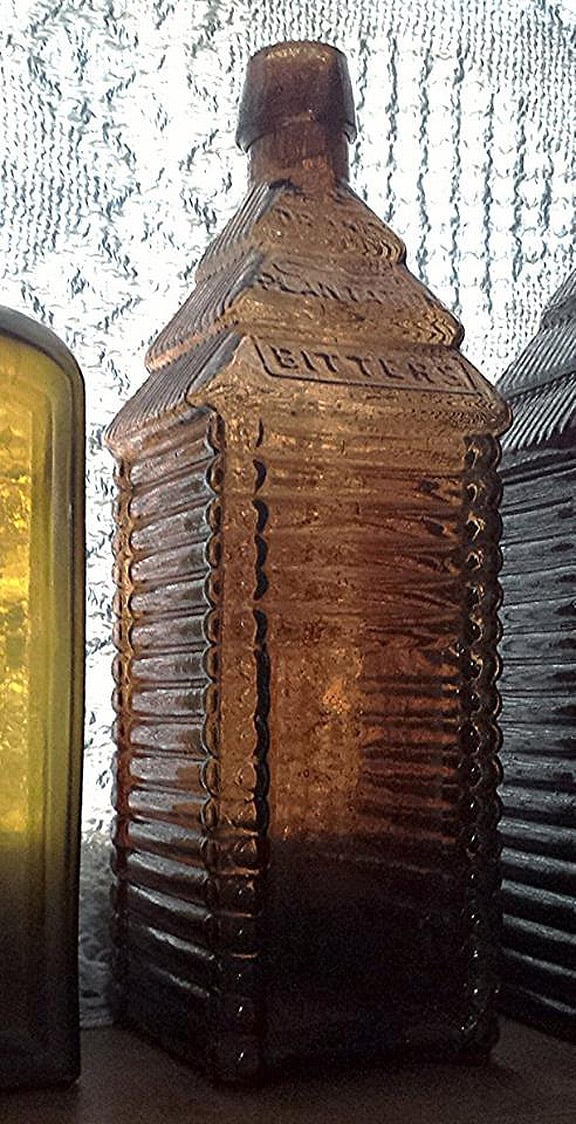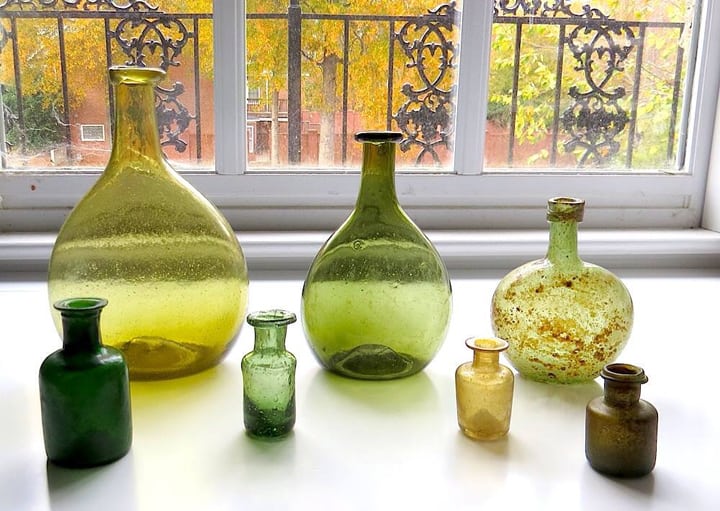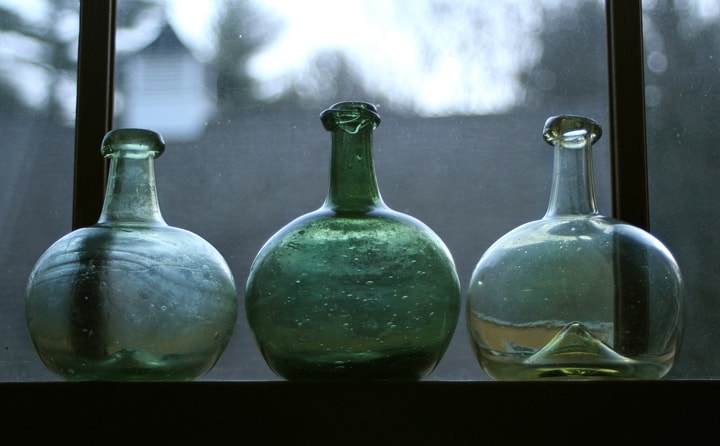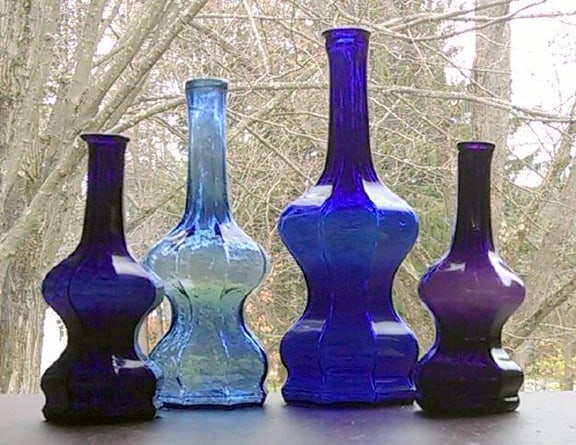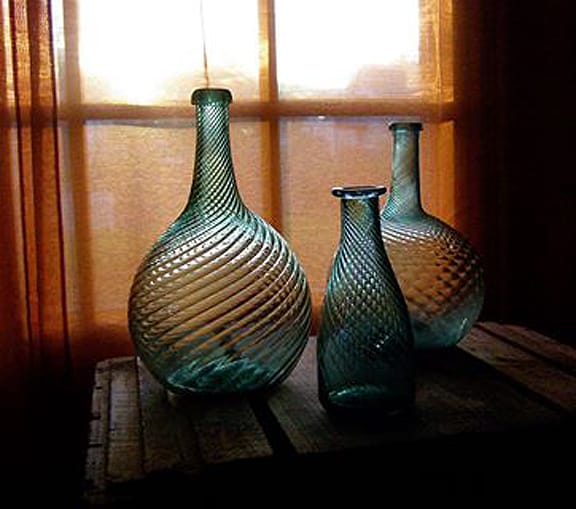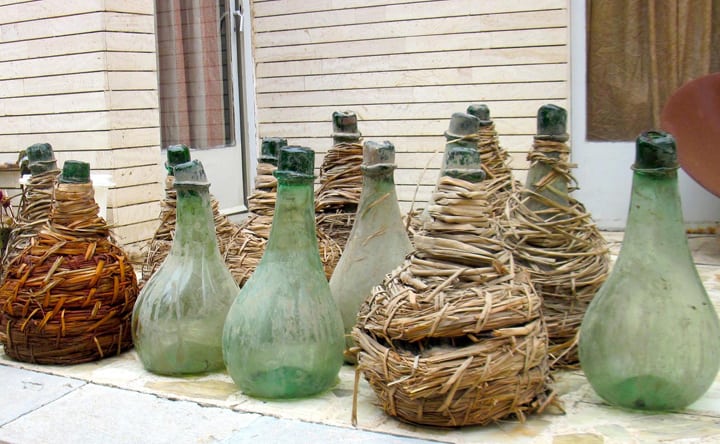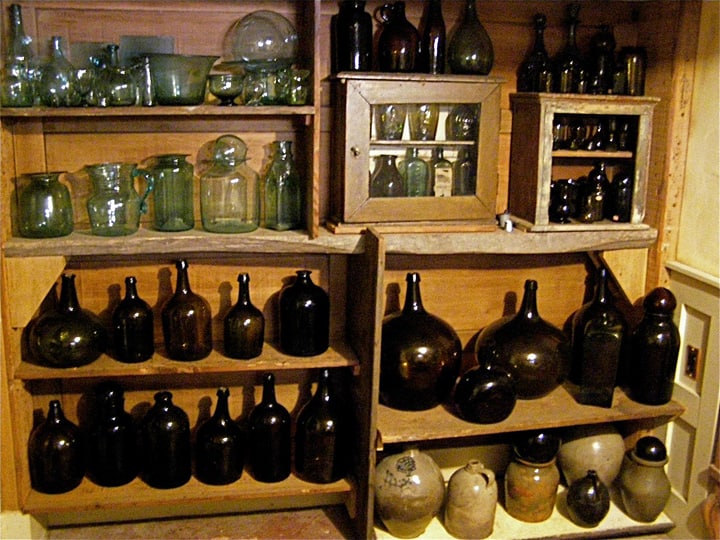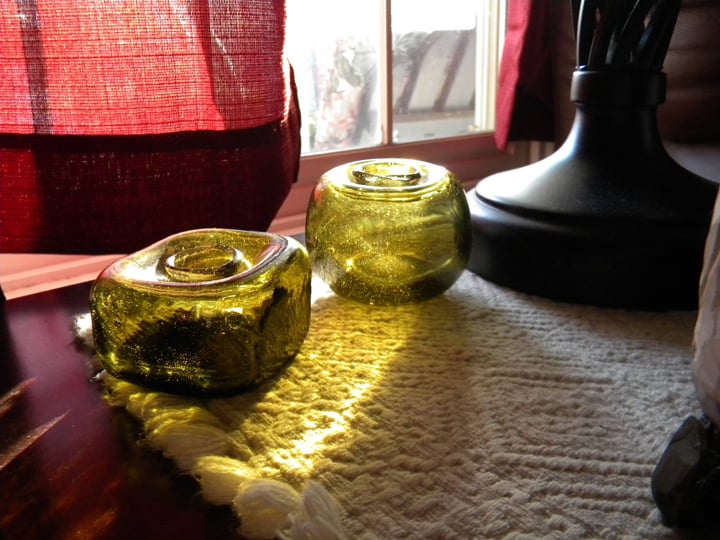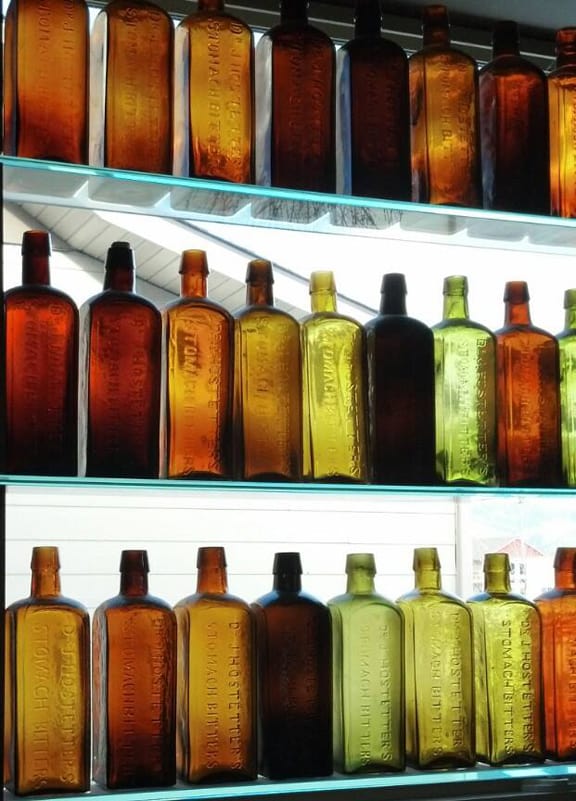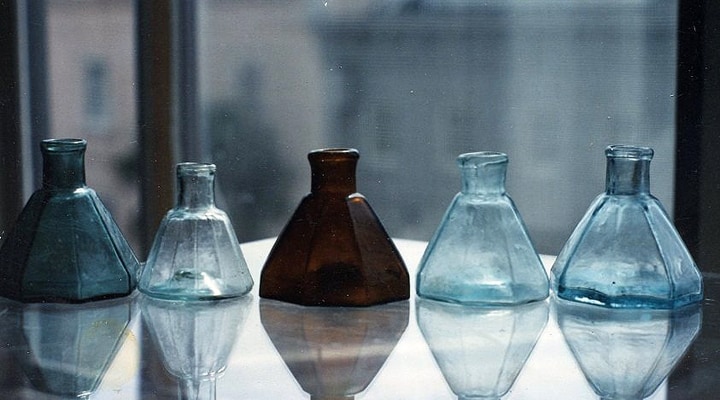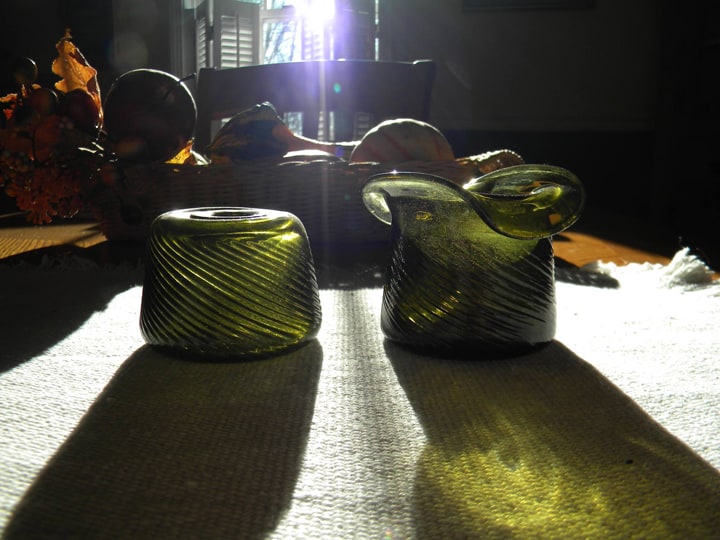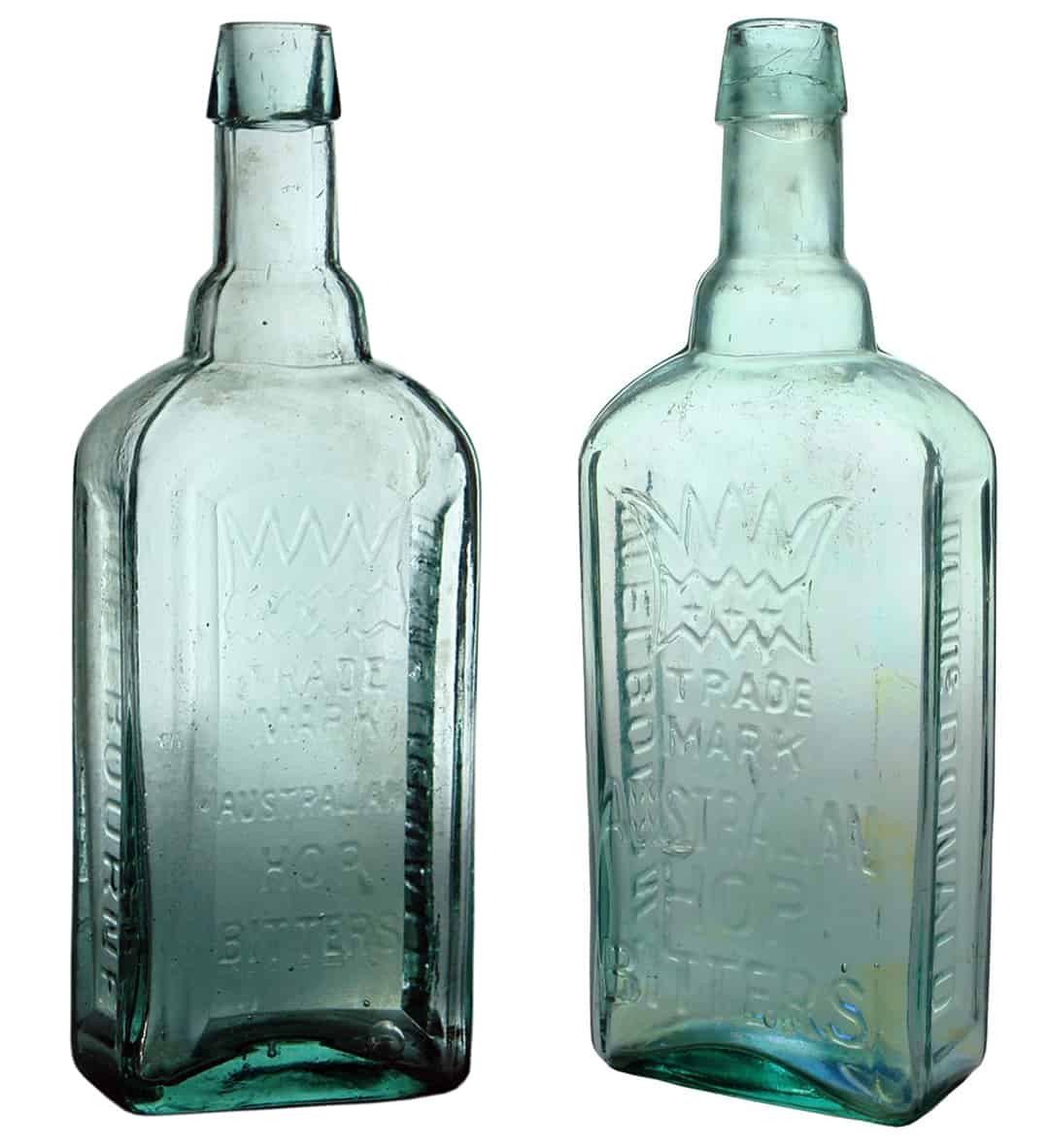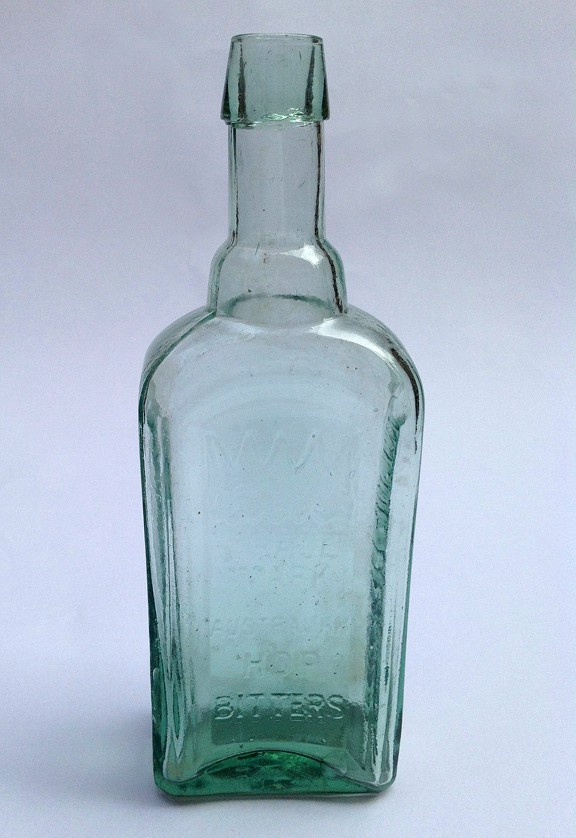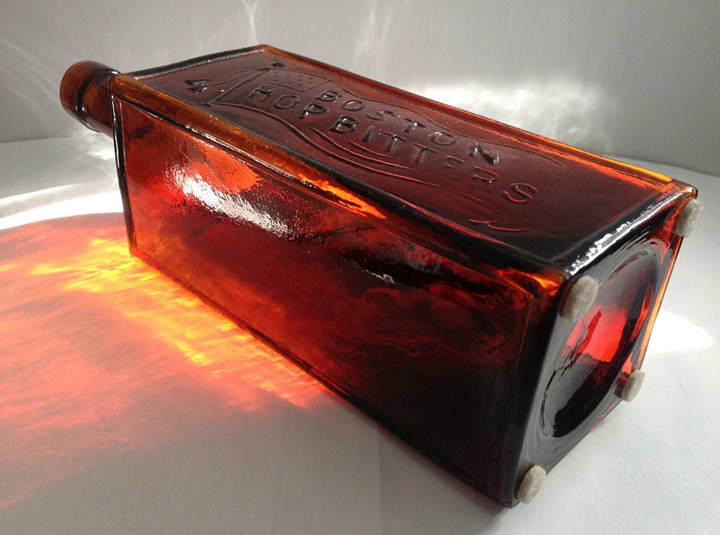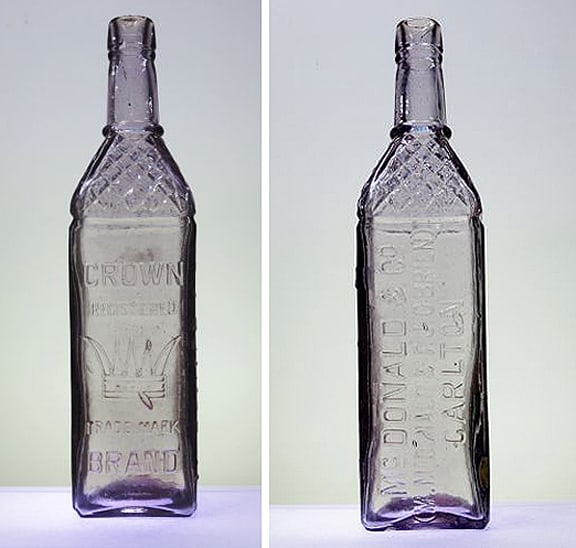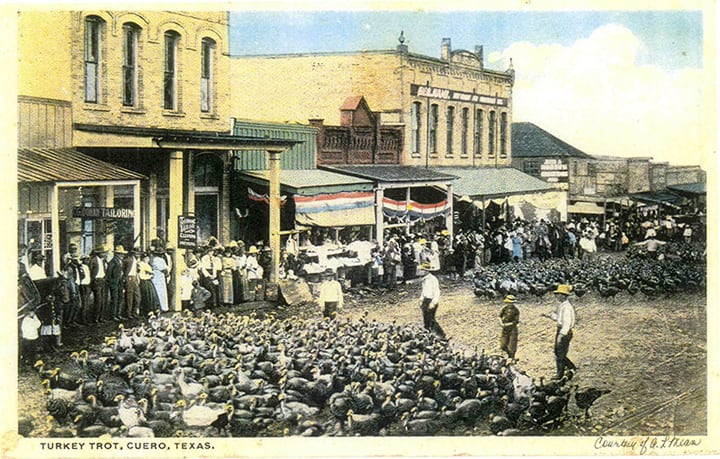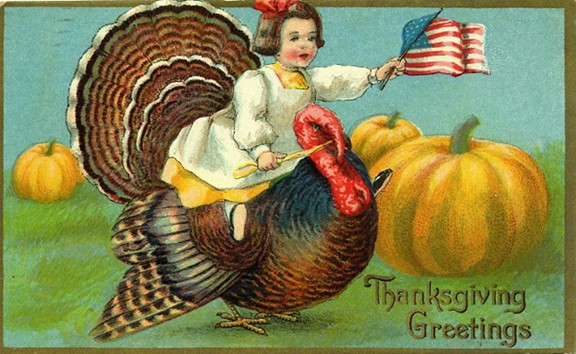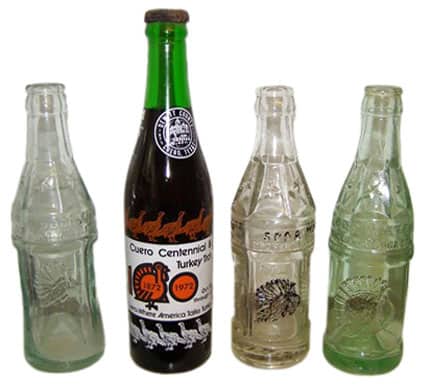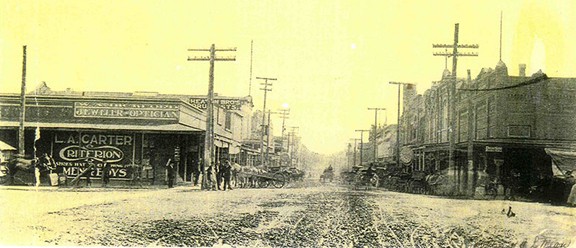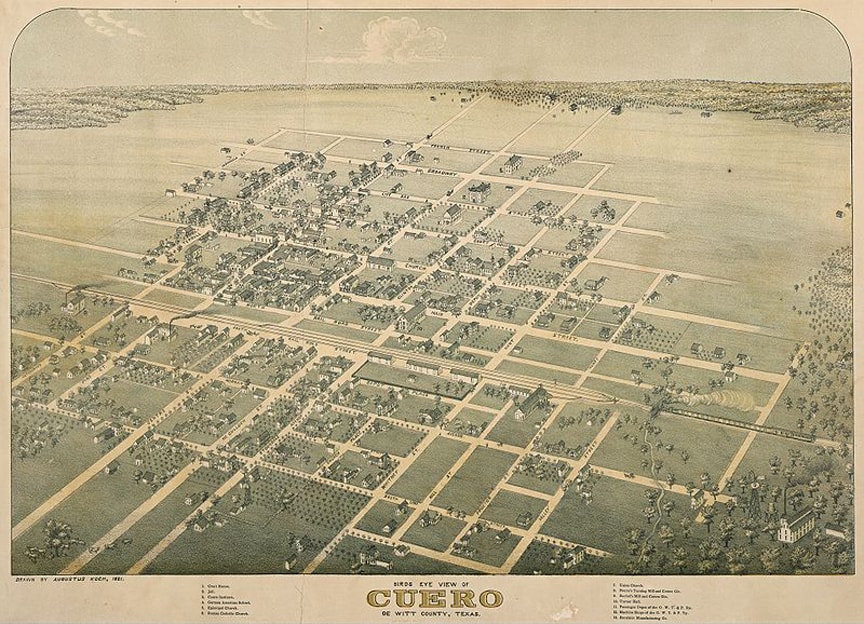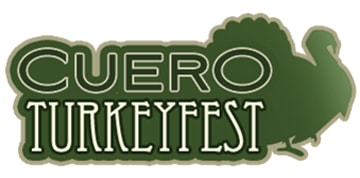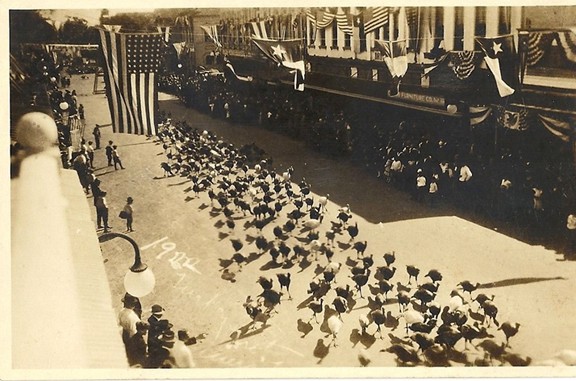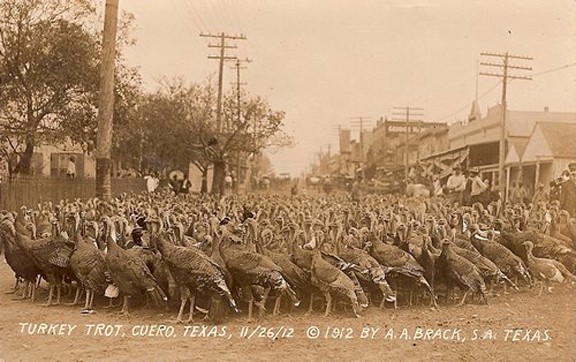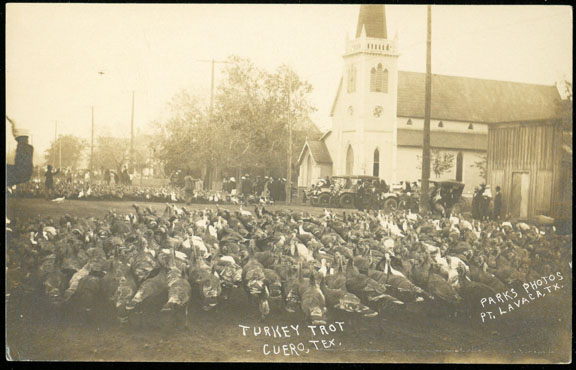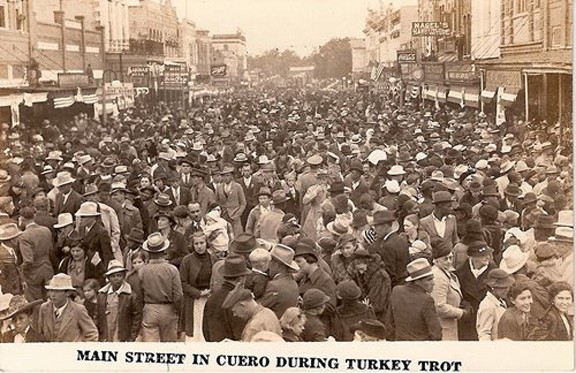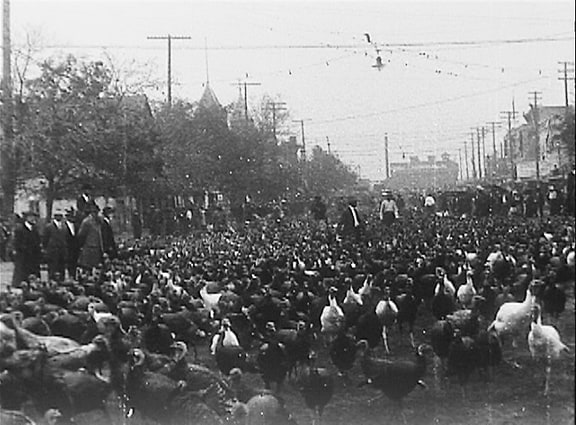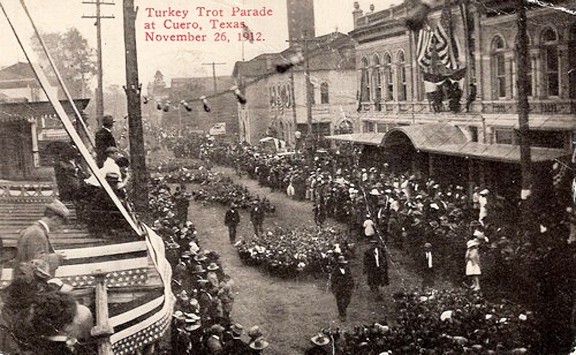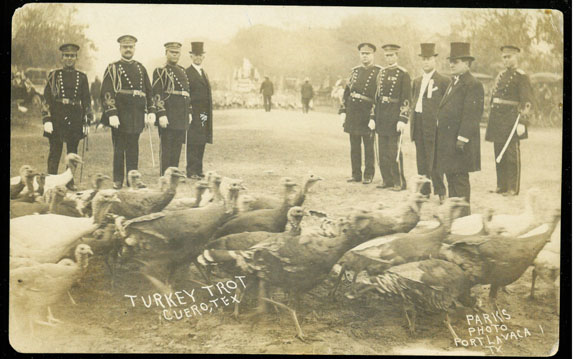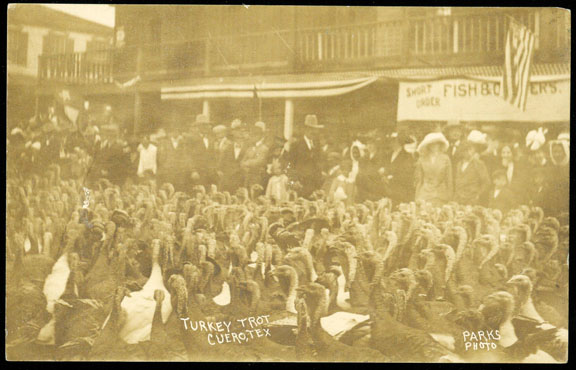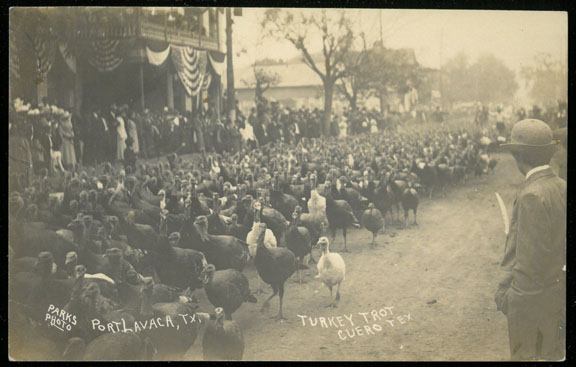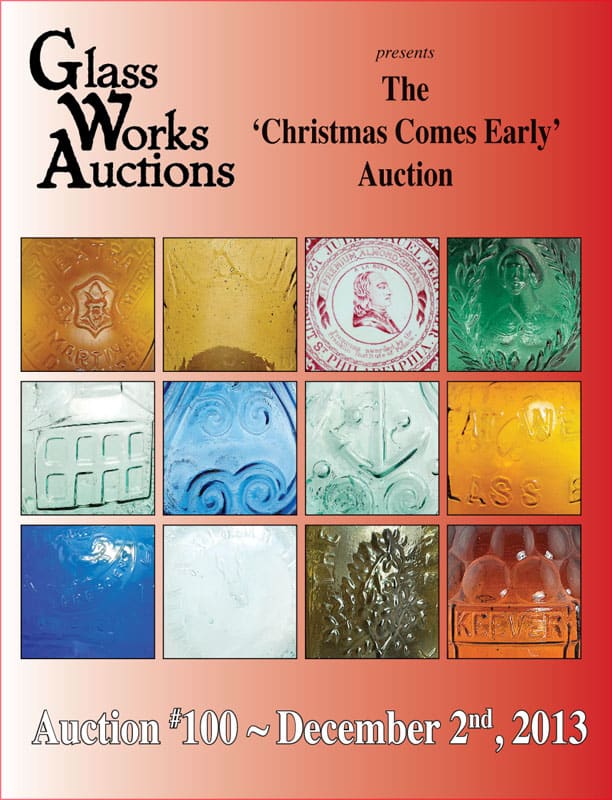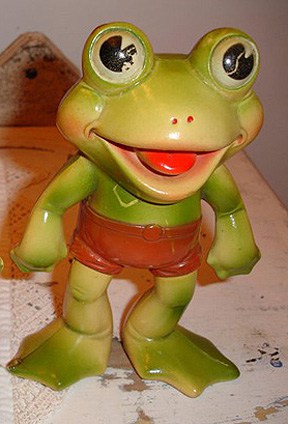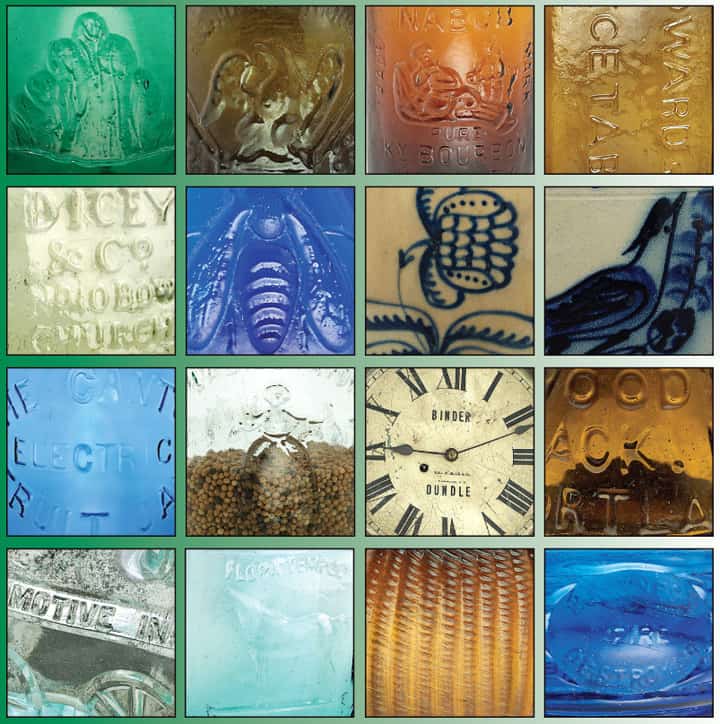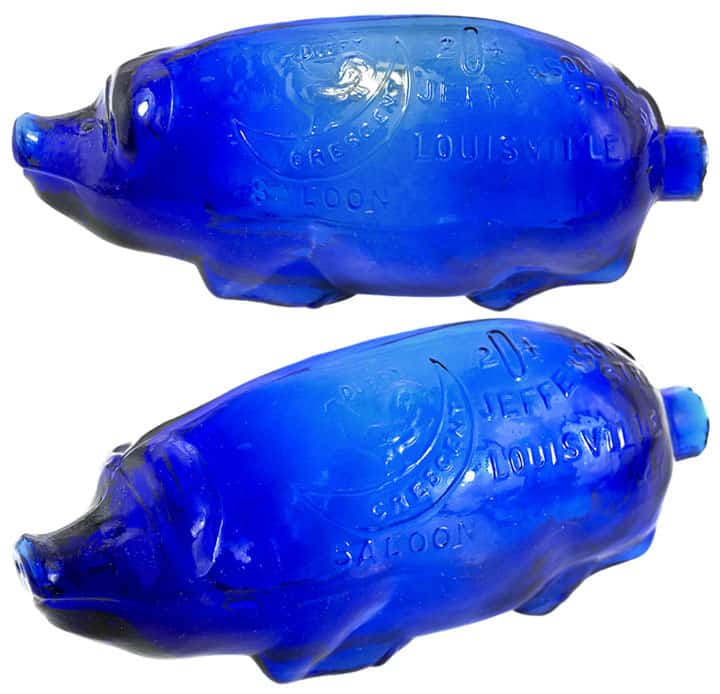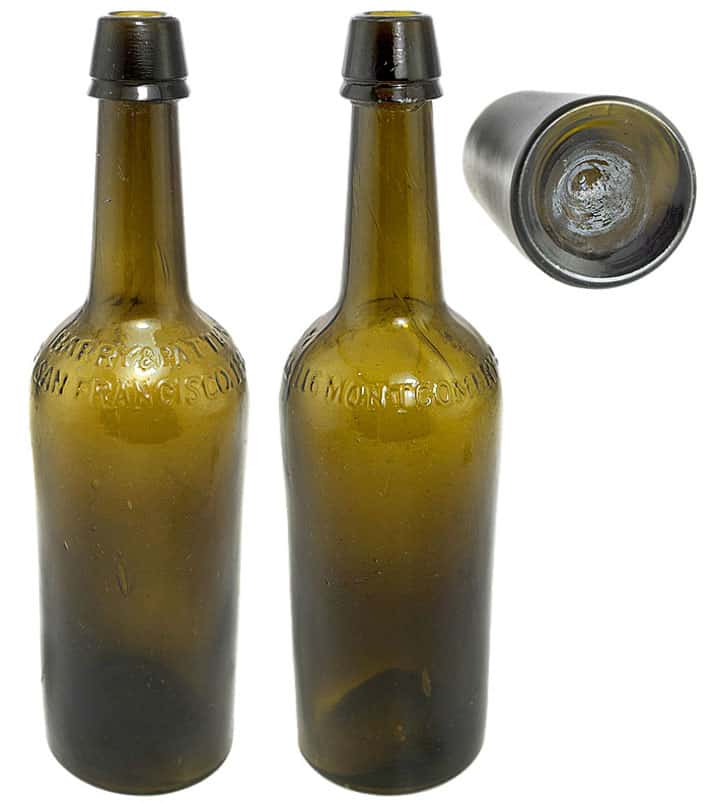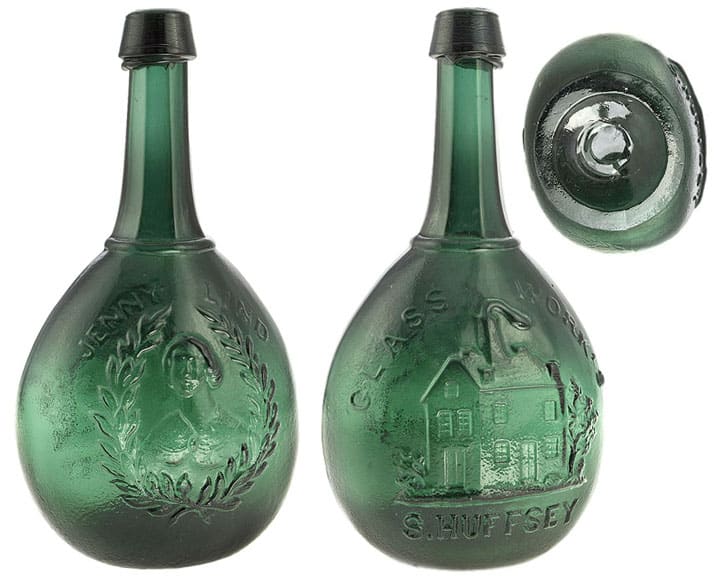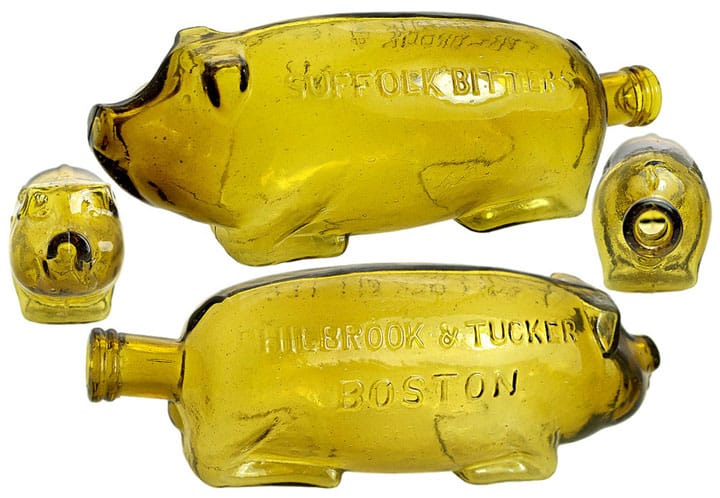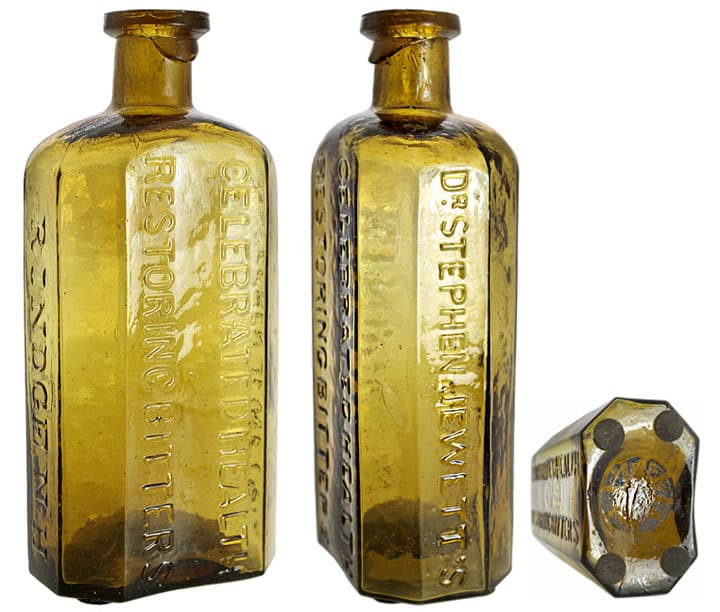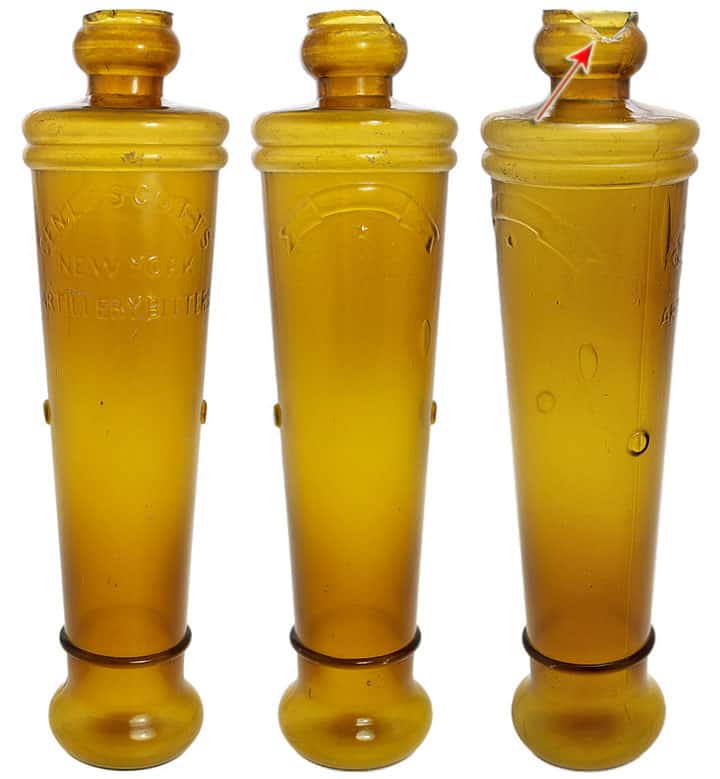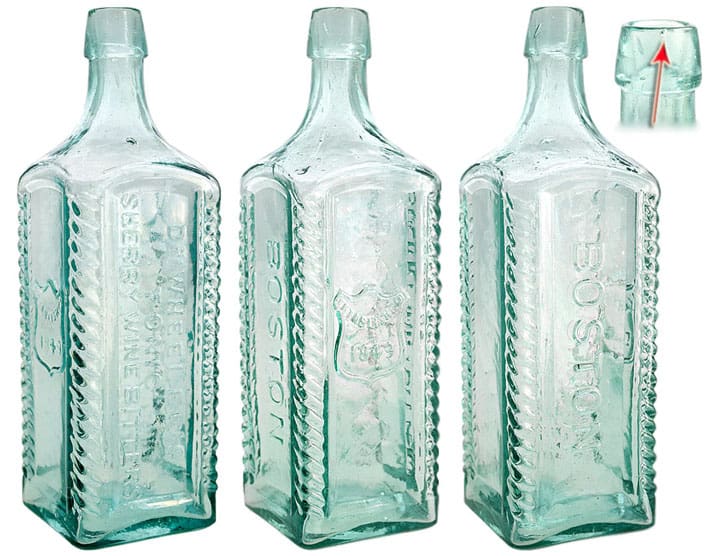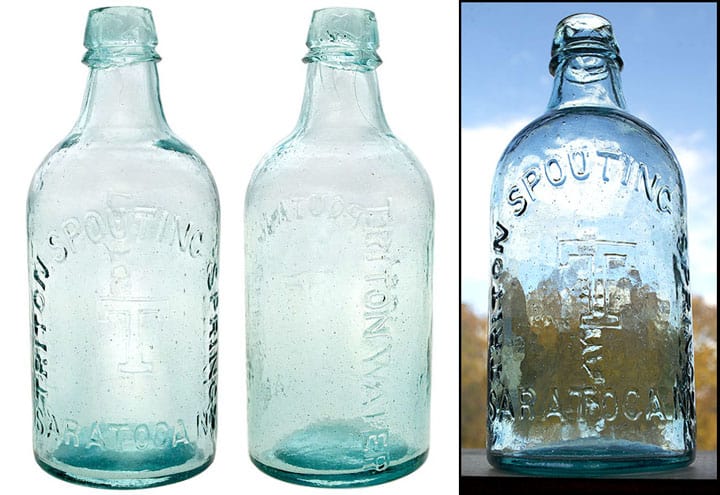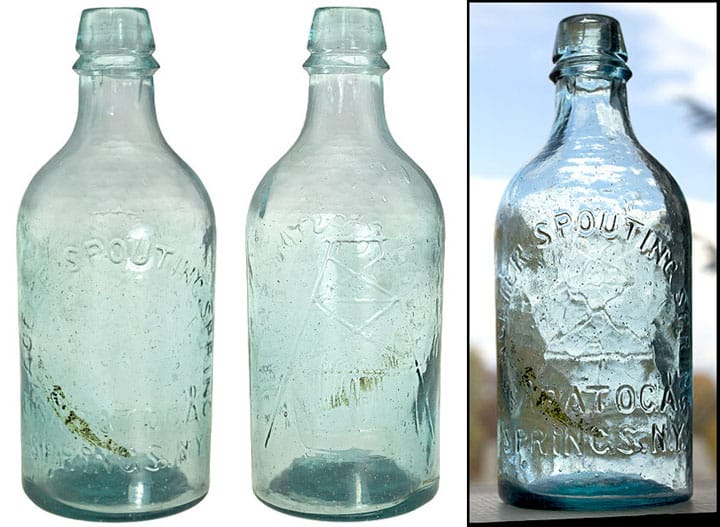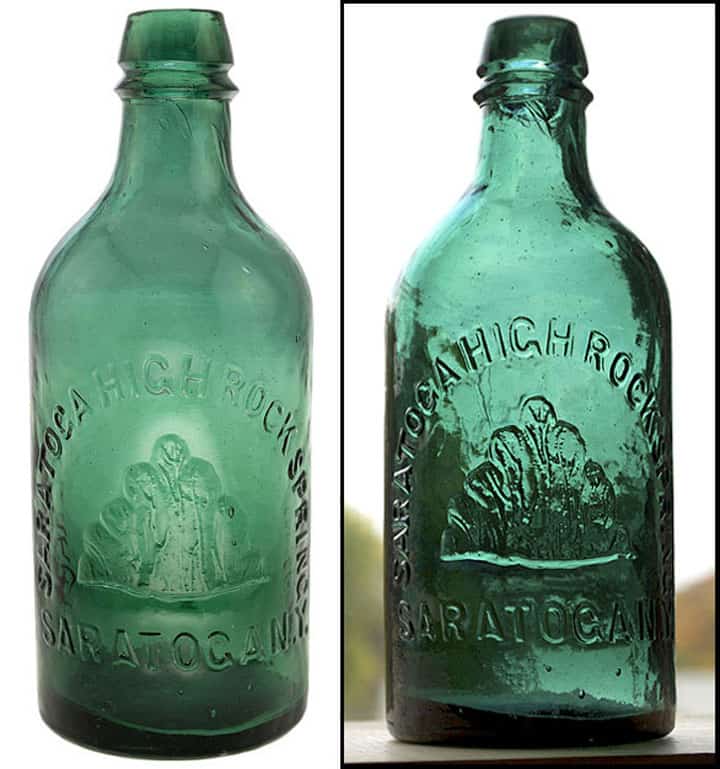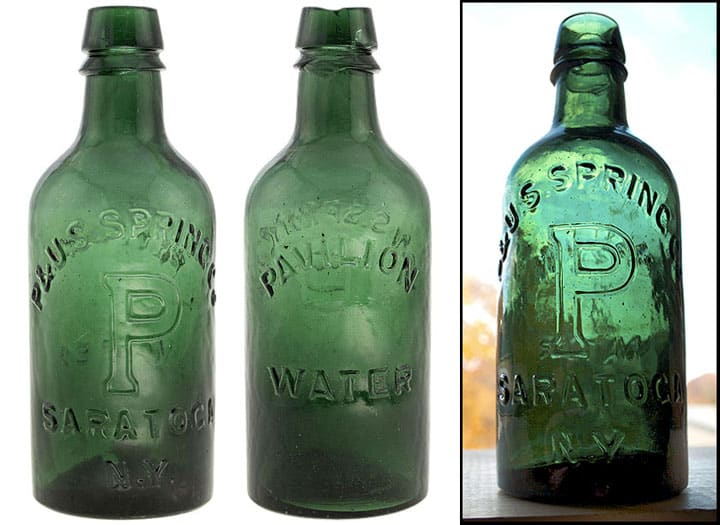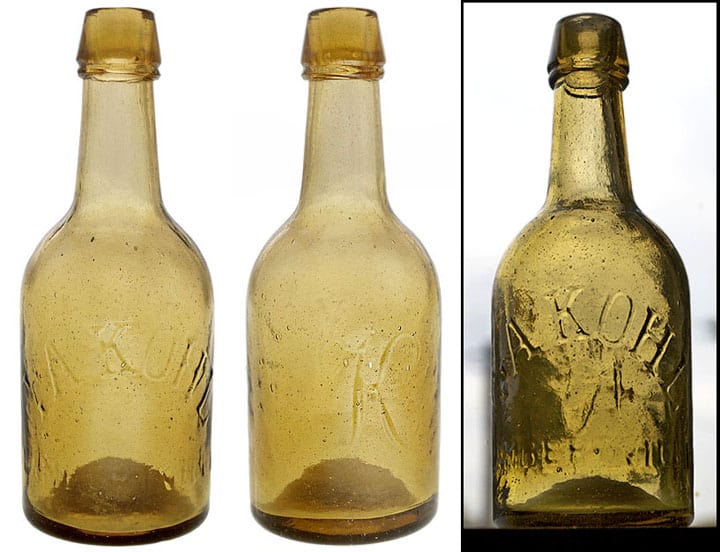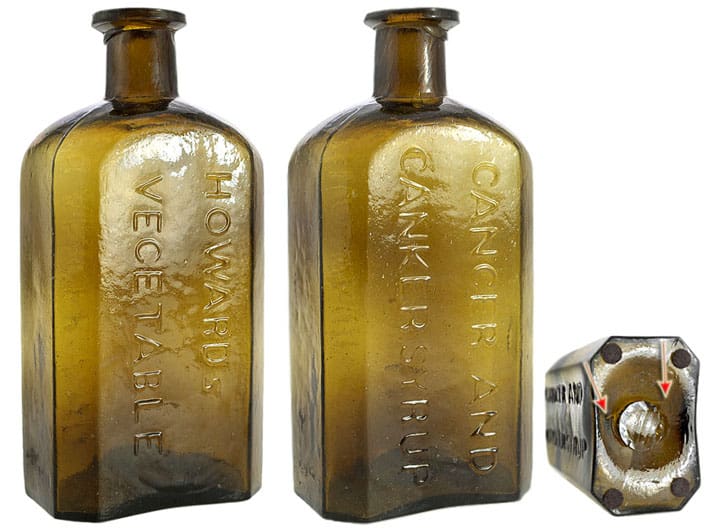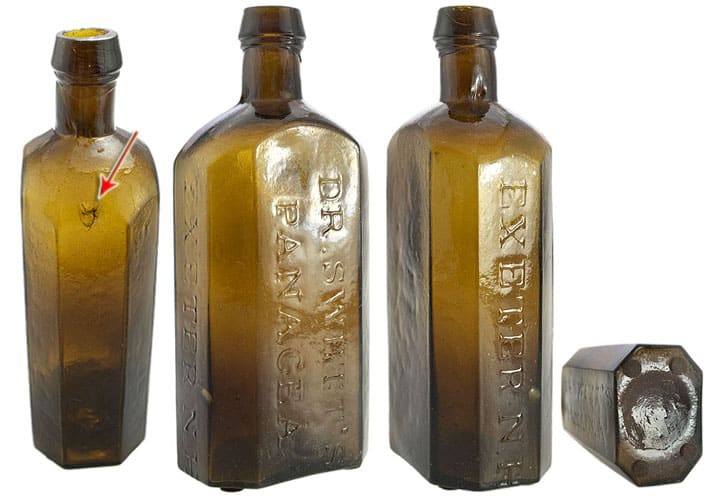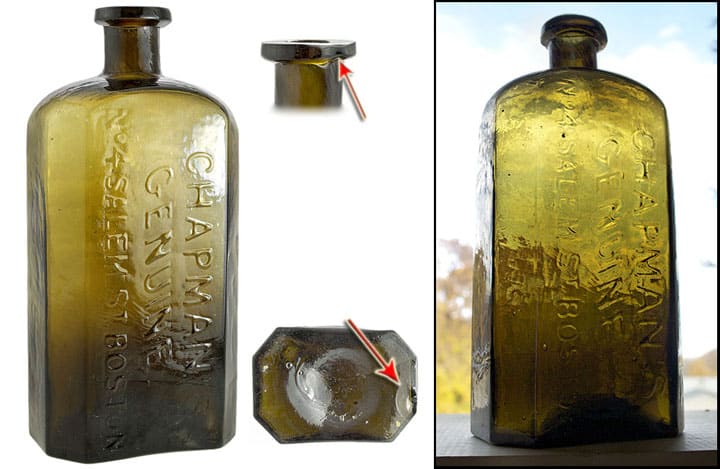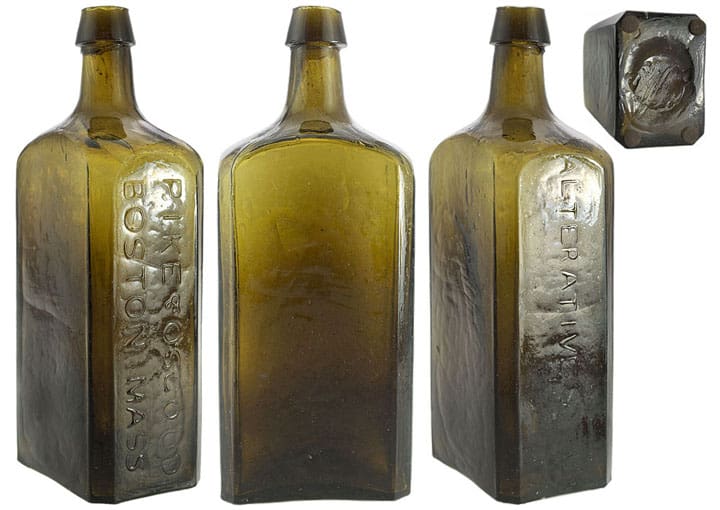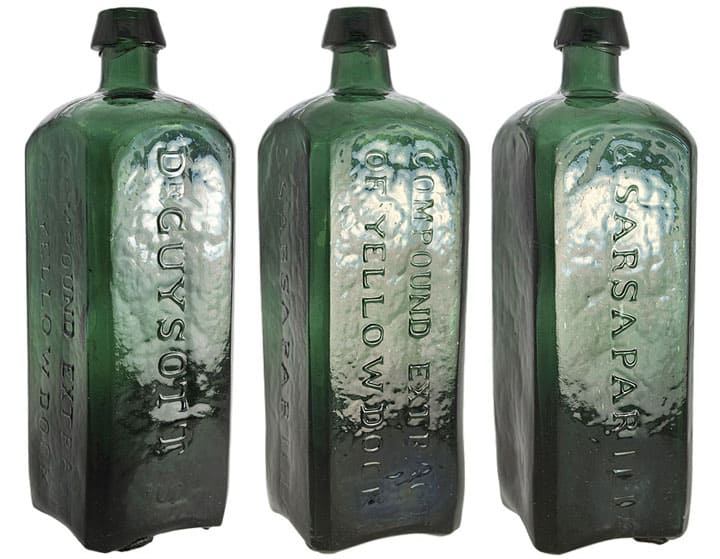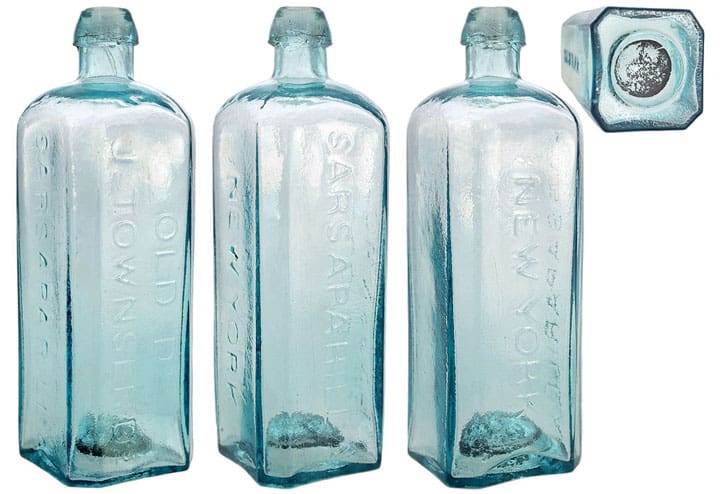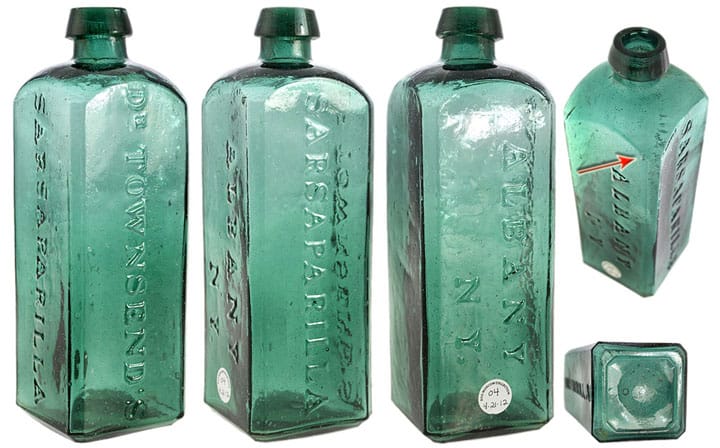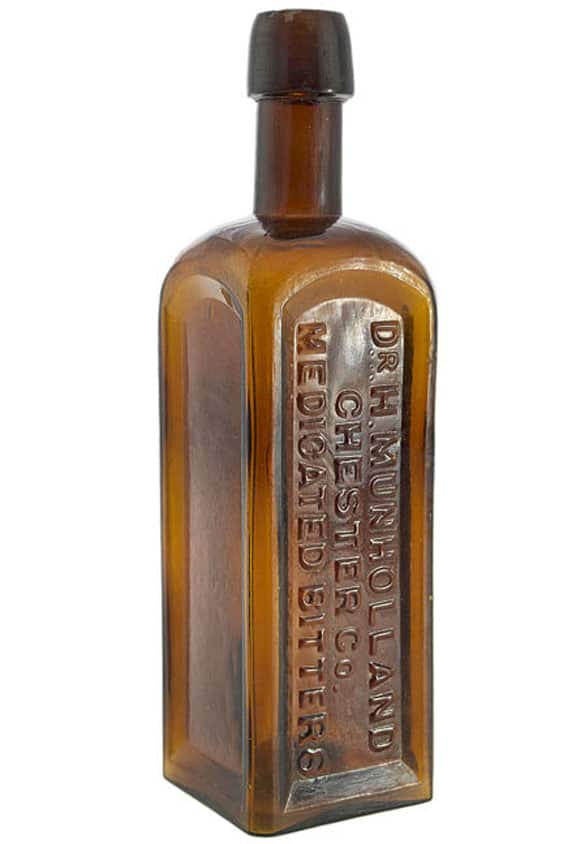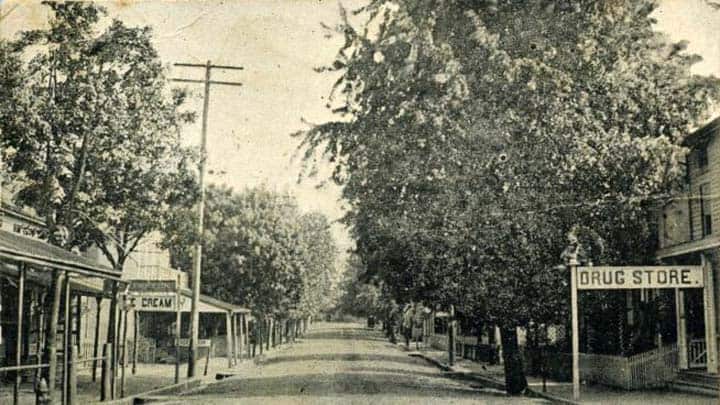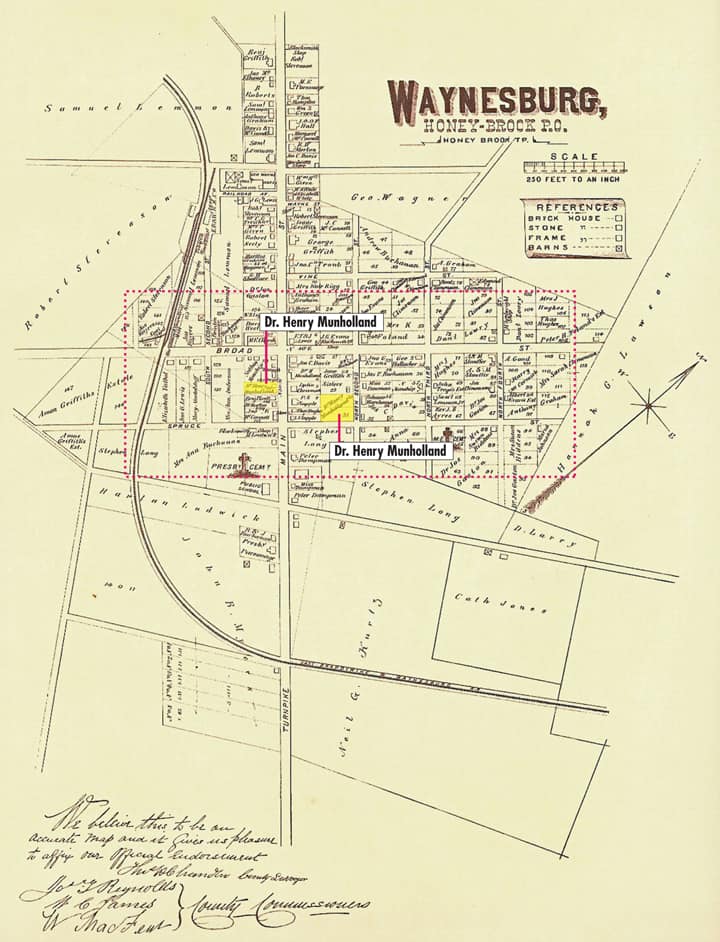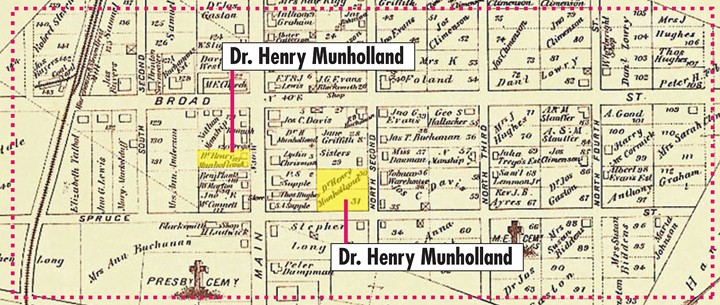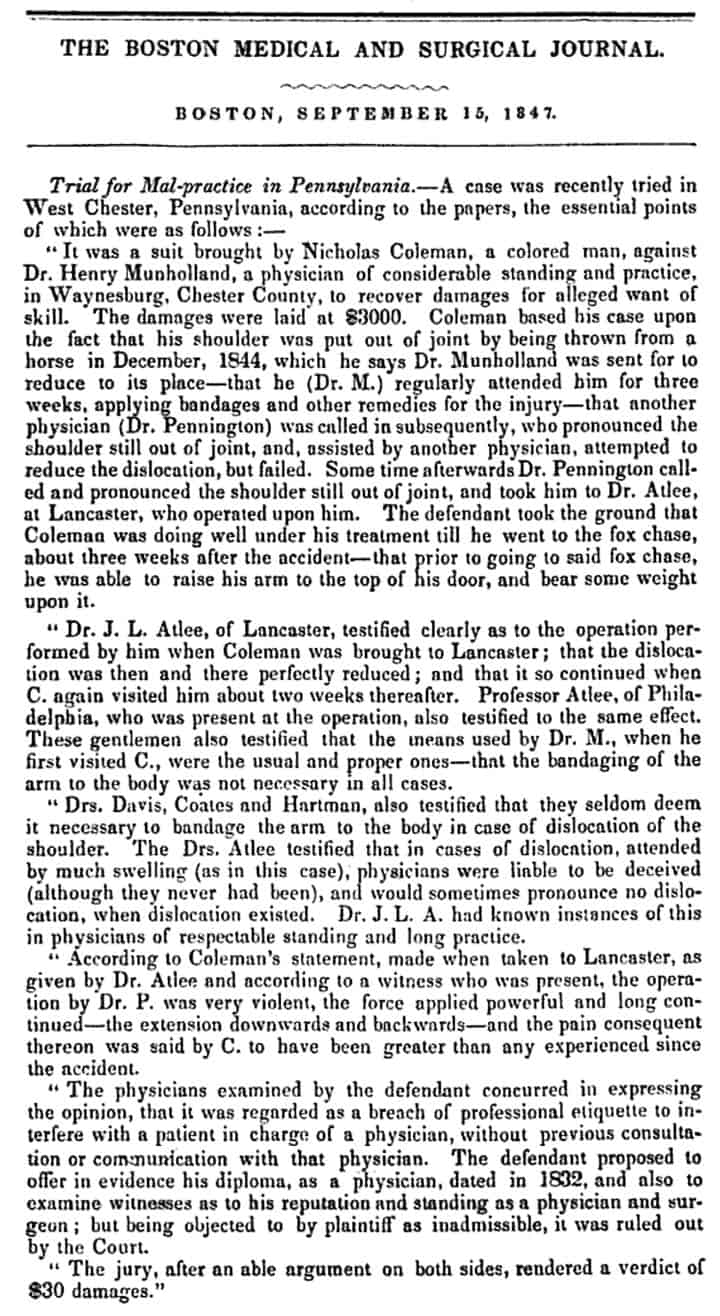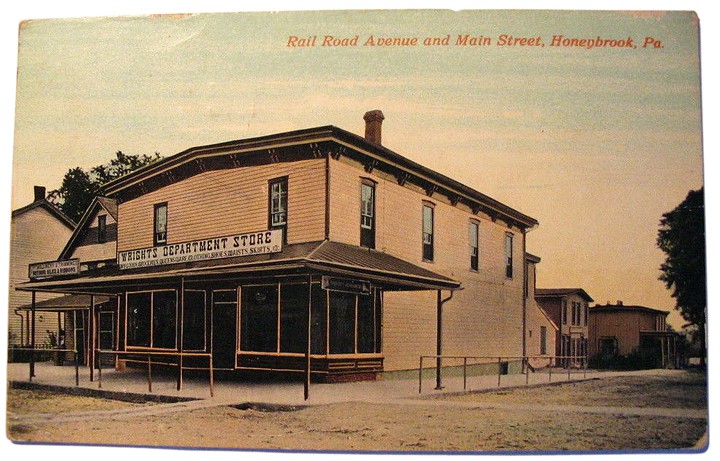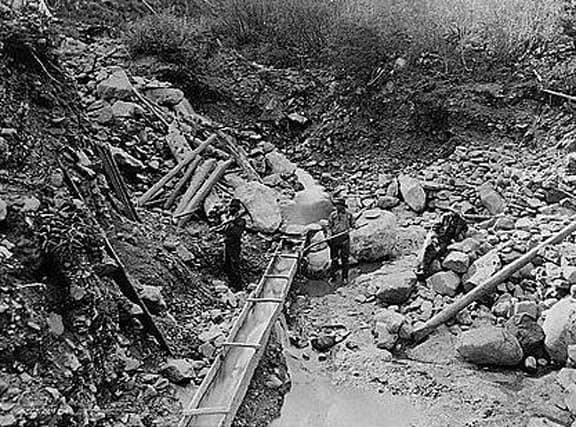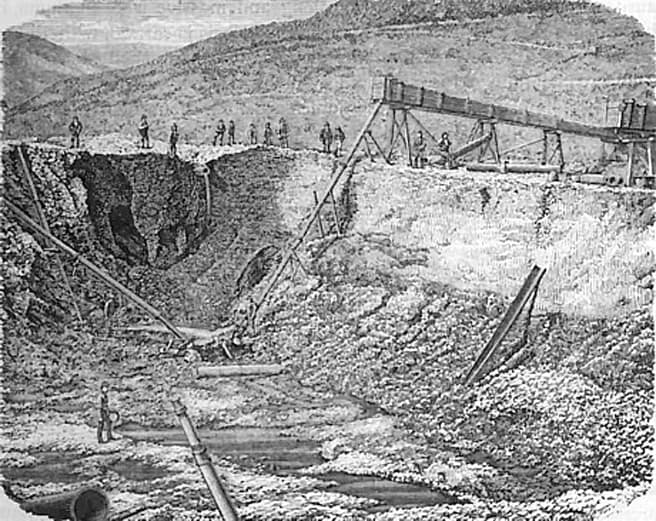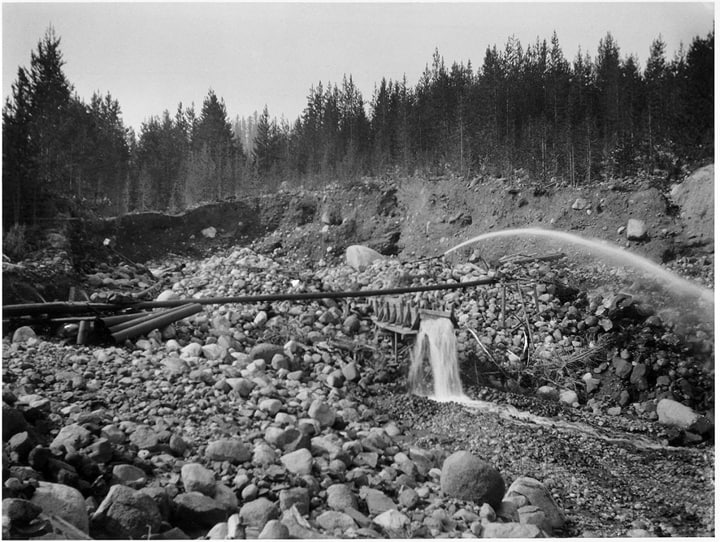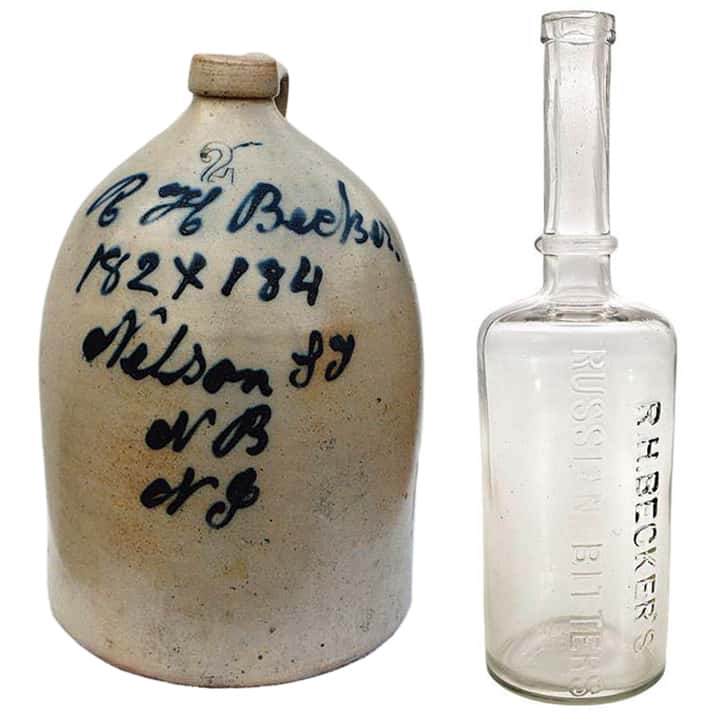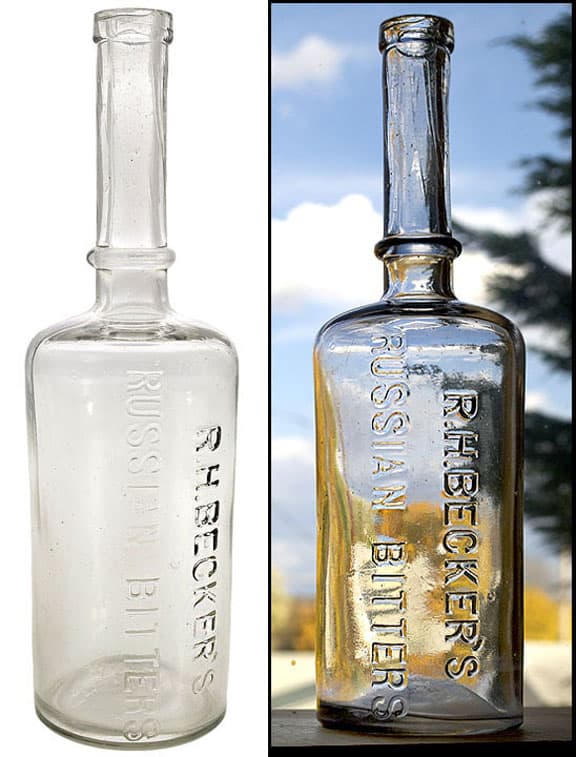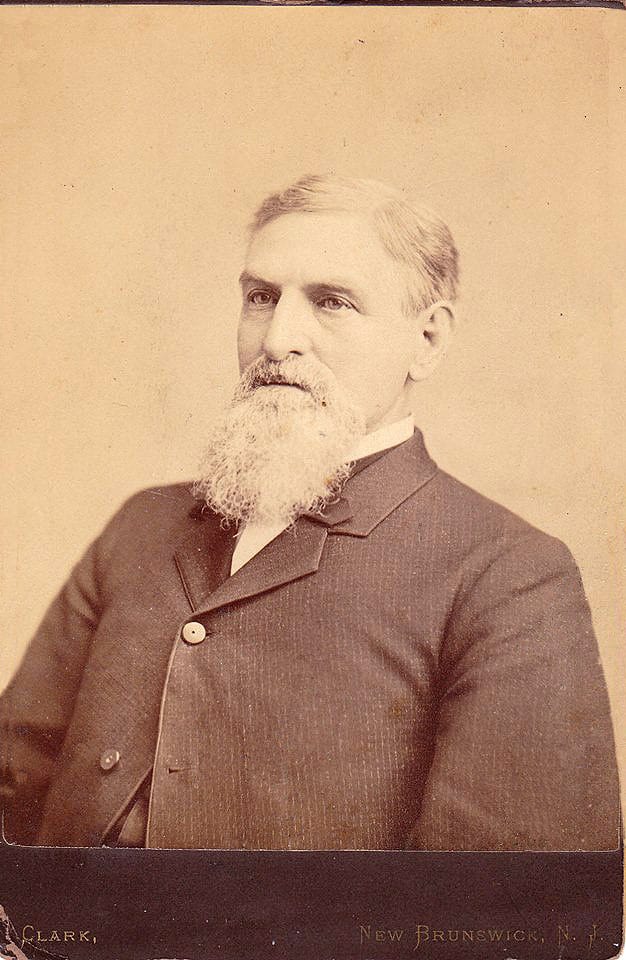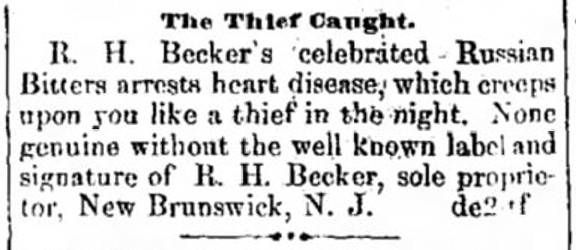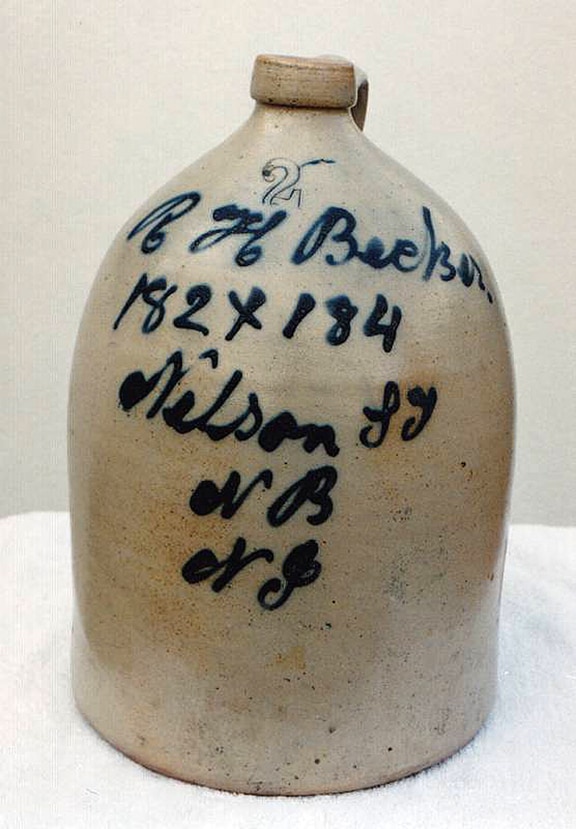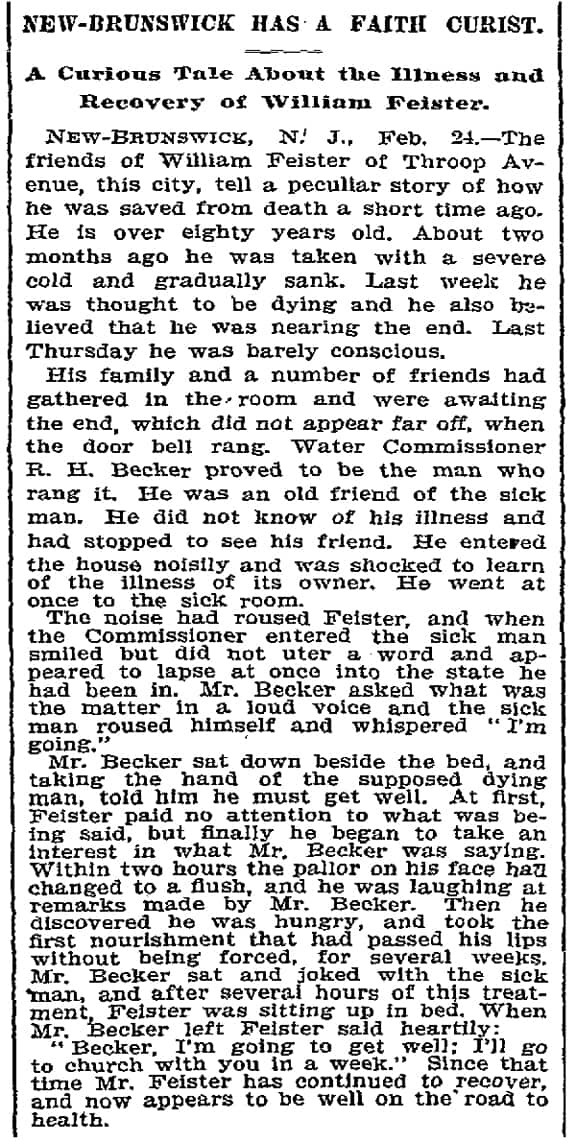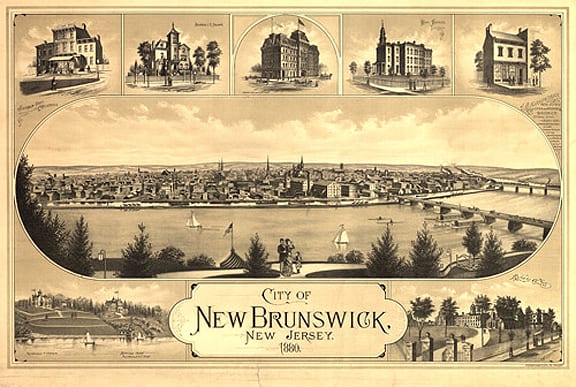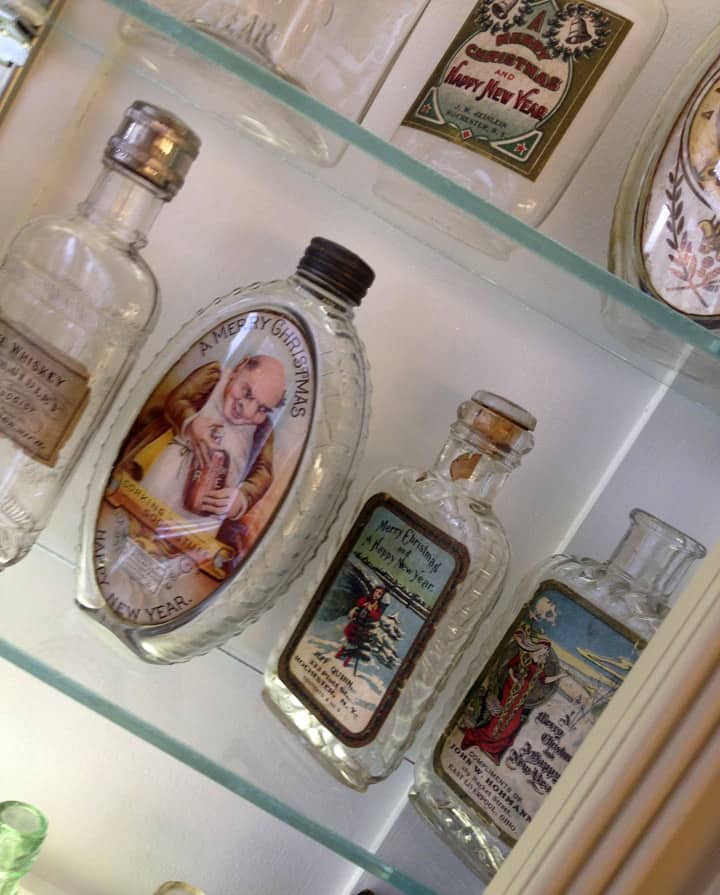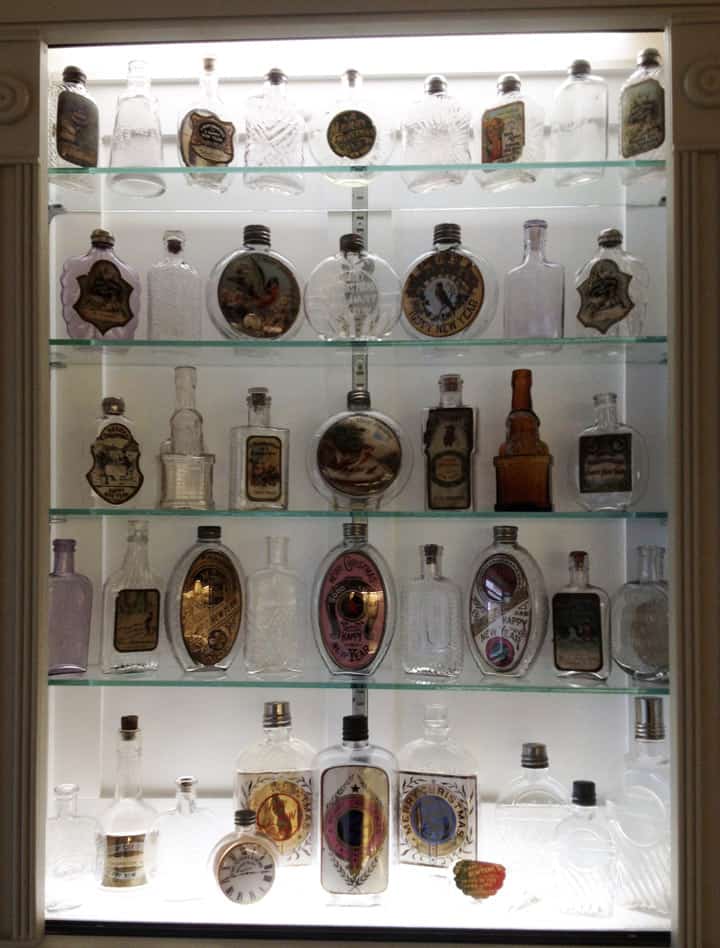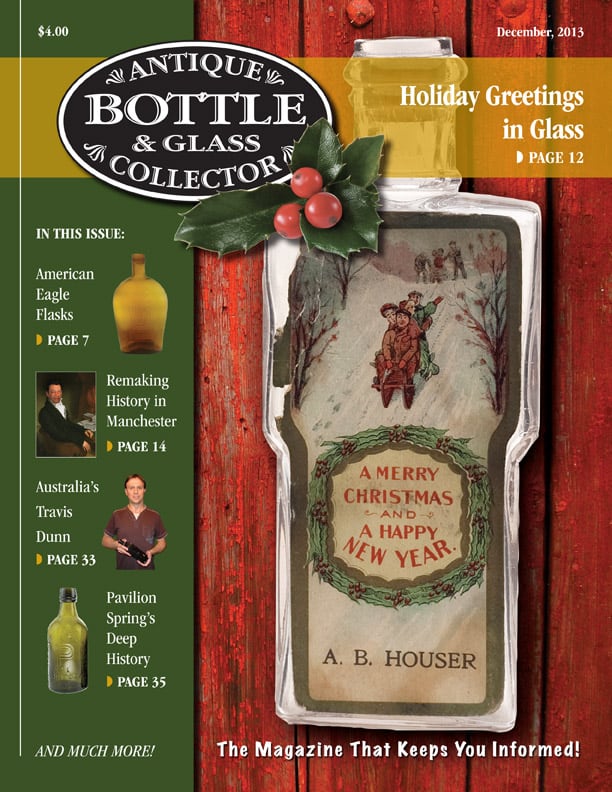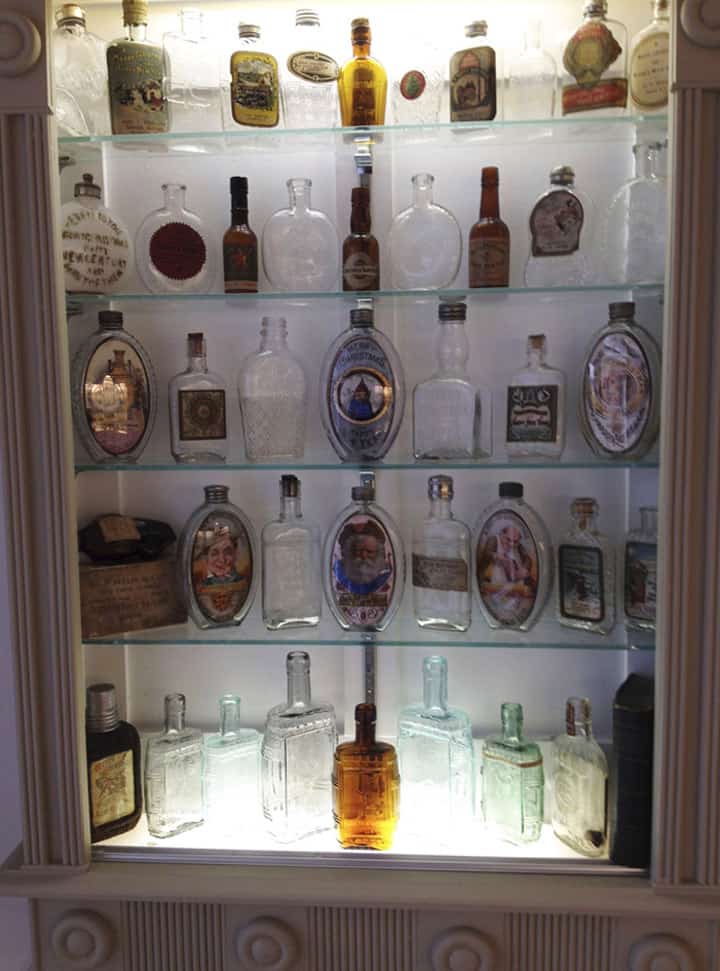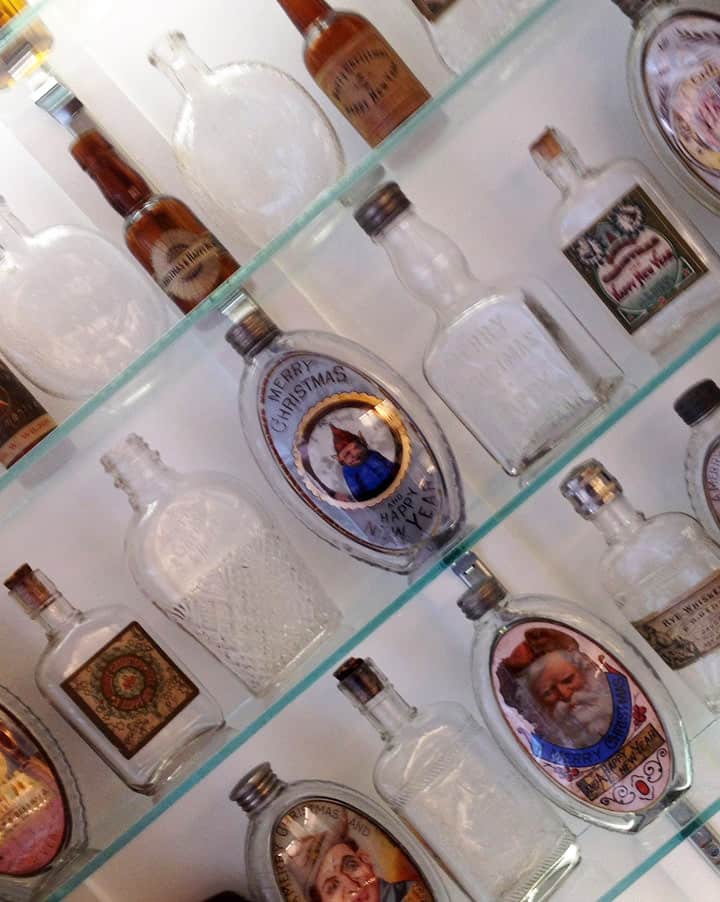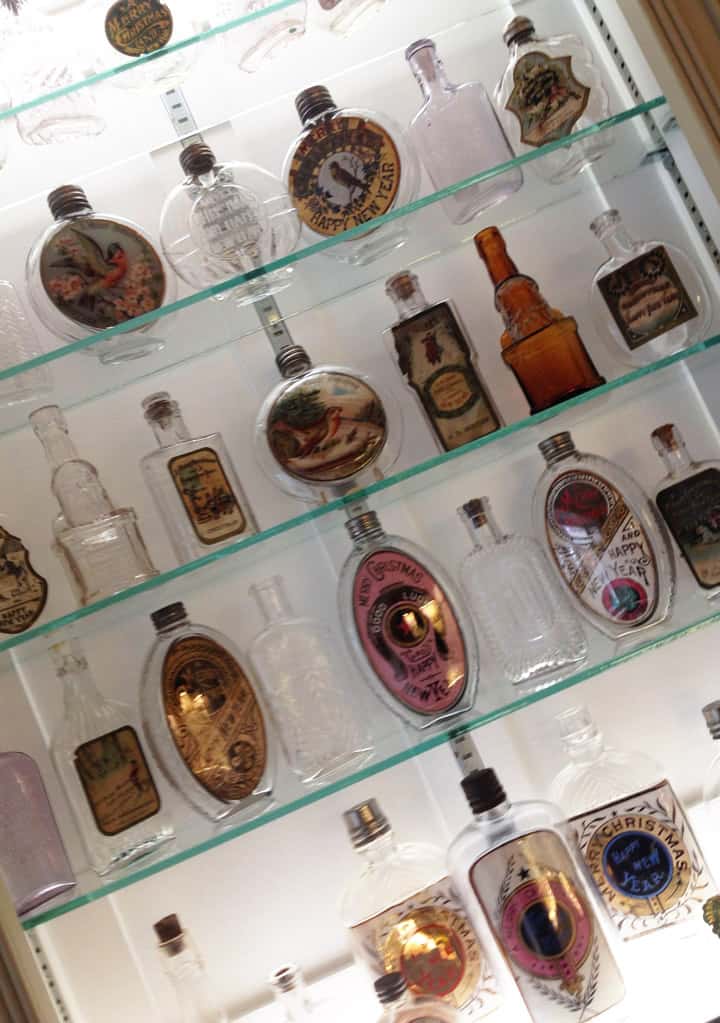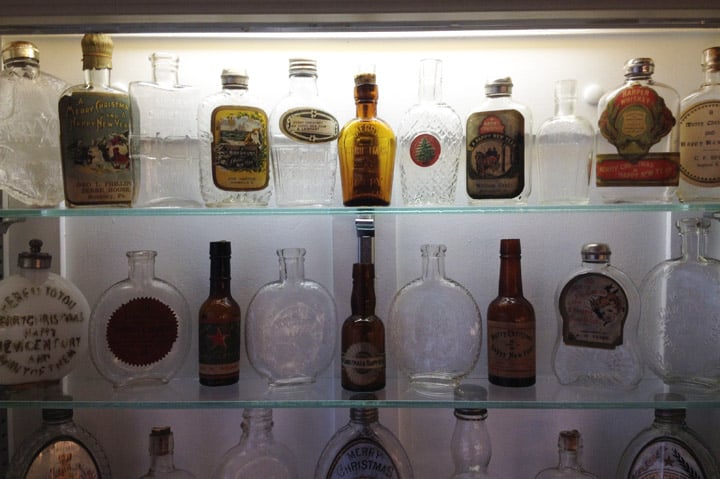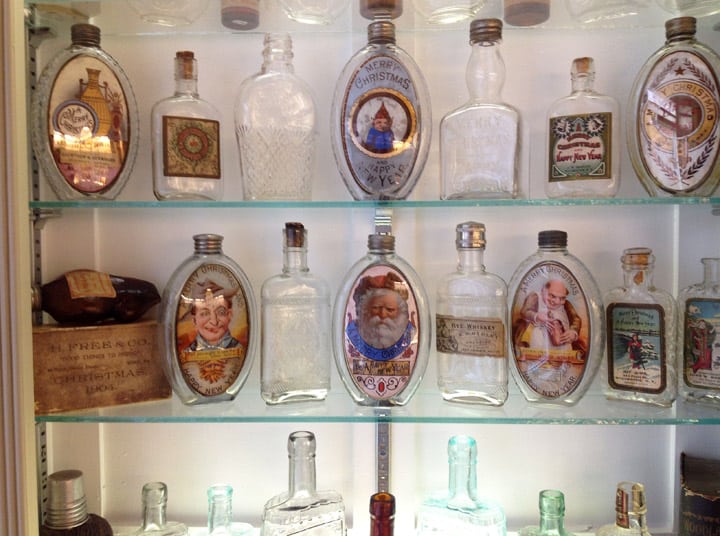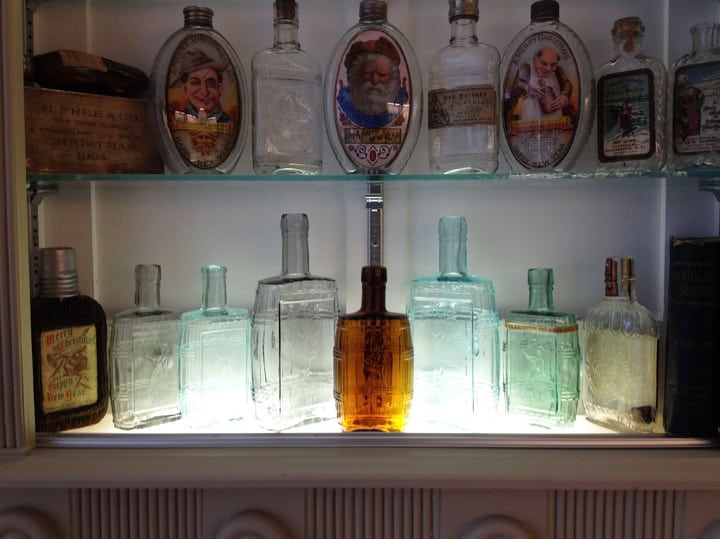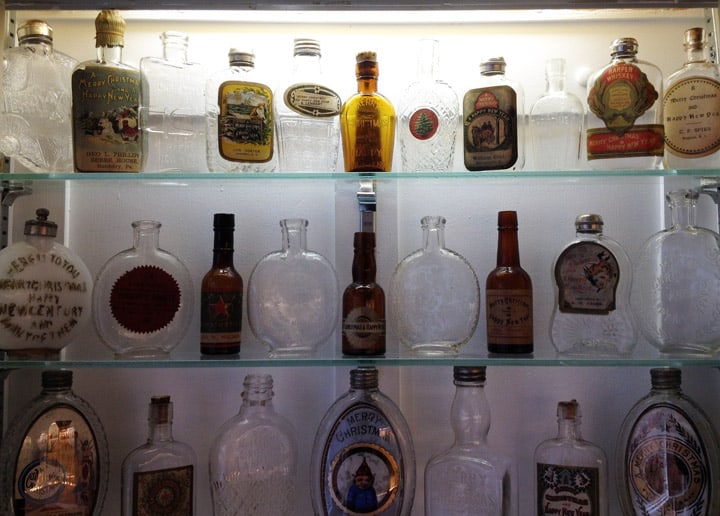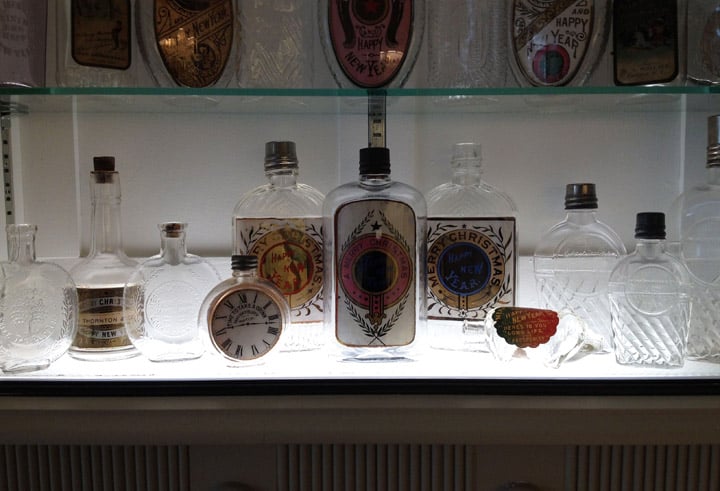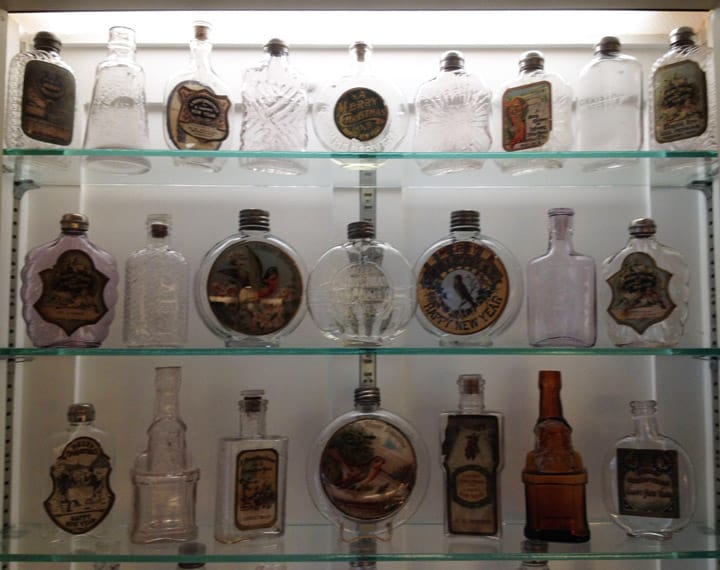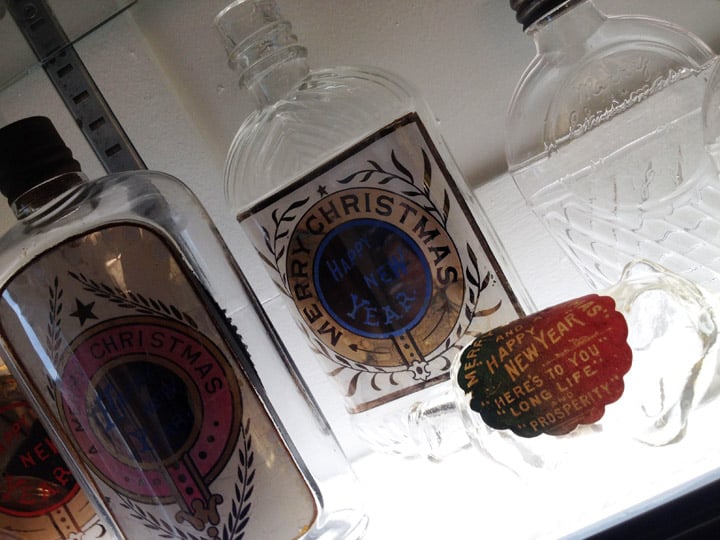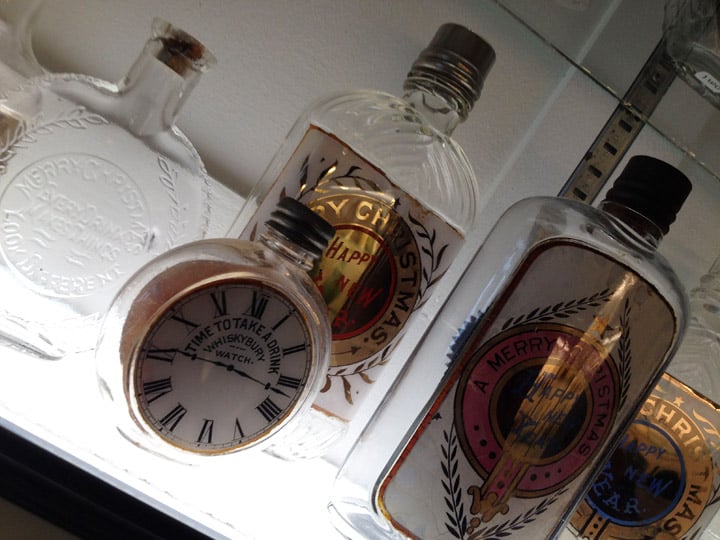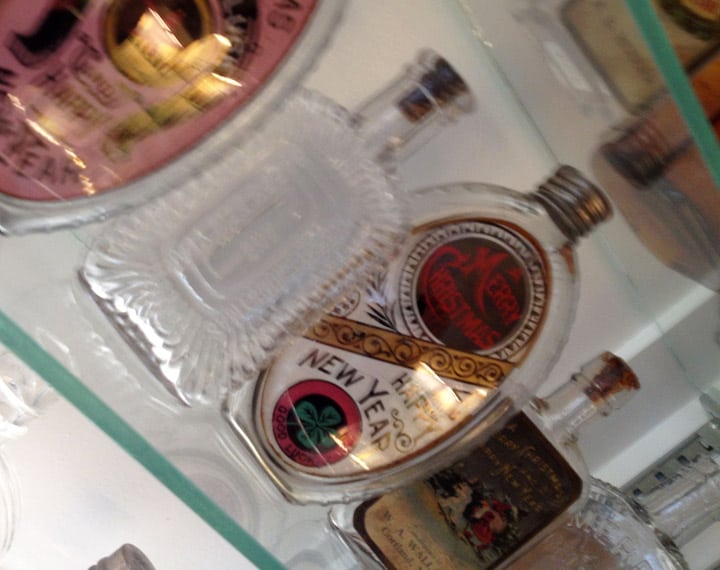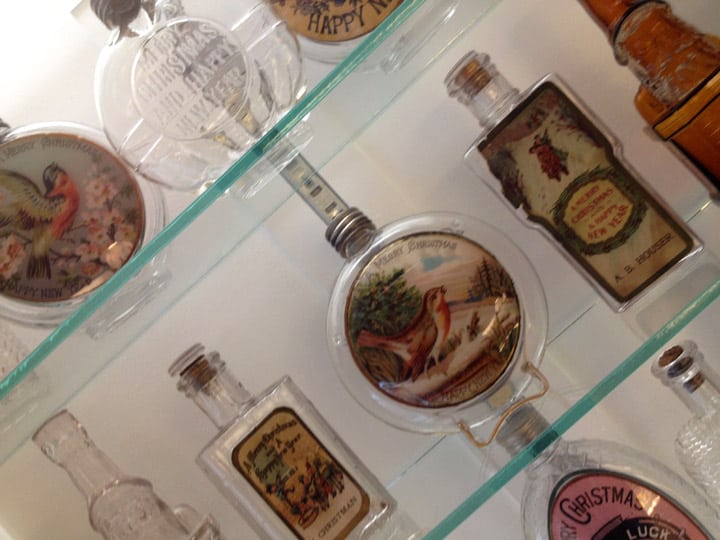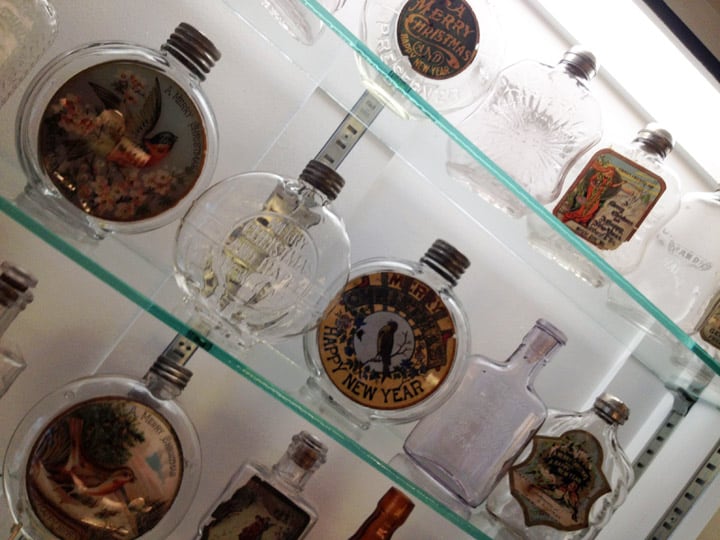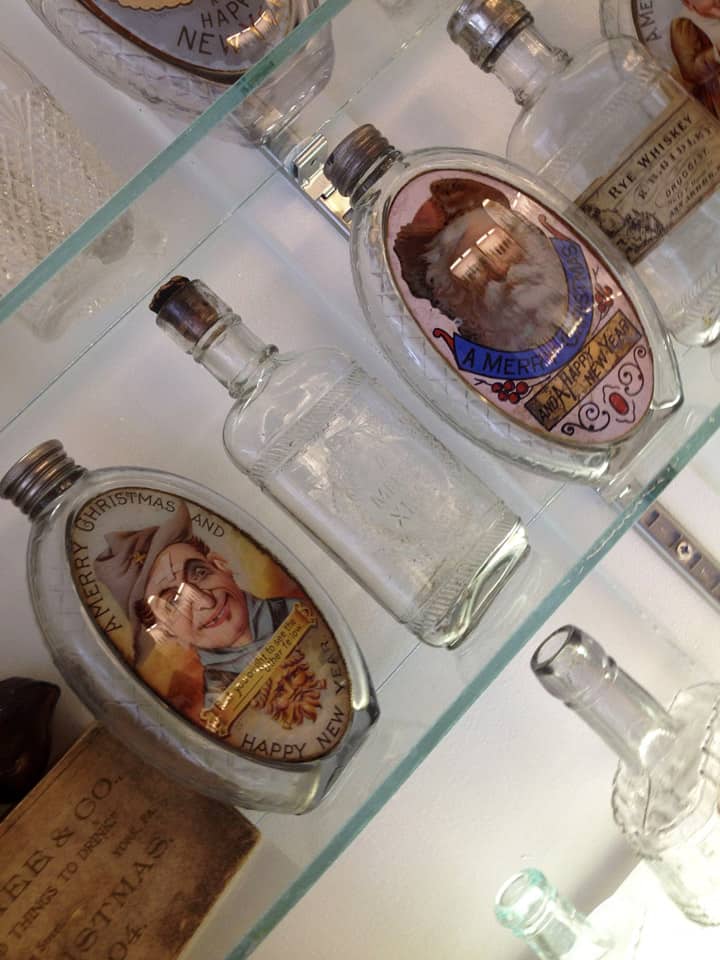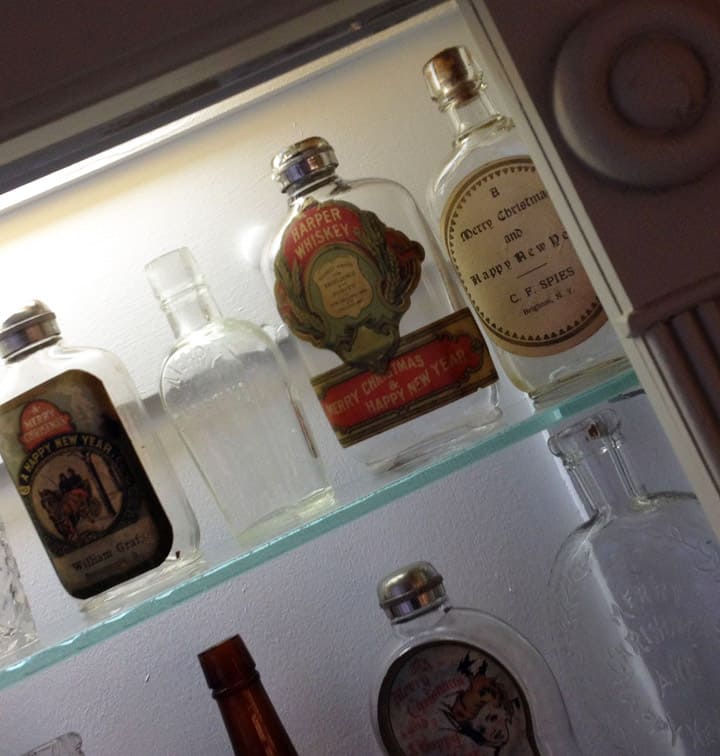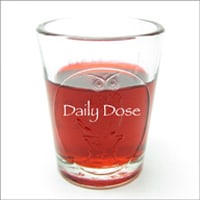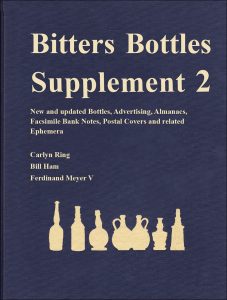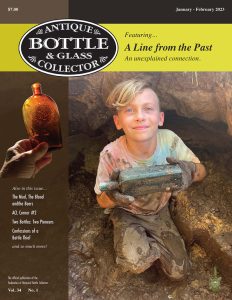Snyder’s Celebrated Bitter Cordial and H. G. Leisenring
01 December 2013 (R•053115) (R•090219)
![]() I spotted a dug, Snyder’s Celebrated Bitter Cordial on eBay and it lead me to thinking about the bottle, the fancy “Snyder’s” script and H. G. Leisenring. This bitters product appears only momentary in time, in a blink of an eye, and vanishes just like the fancy proprietor, Harry G. Leisenring did when he disappeared after his wax show failed at the Centennial International Exposition. It seems that old Harry had been afflicted with “Centennial enterprise fever” and used company funds and other investors money to create life-size and life-like wax models of the signers of the Declaration of Independence. When this exhibit failed, the money and Harry disappeared.
I spotted a dug, Snyder’s Celebrated Bitter Cordial on eBay and it lead me to thinking about the bottle, the fancy “Snyder’s” script and H. G. Leisenring. This bitters product appears only momentary in time, in a blink of an eye, and vanishes just like the fancy proprietor, Harry G. Leisenring did when he disappeared after his wax show failed at the Centennial International Exposition. It seems that old Harry had been afflicted with “Centennial enterprise fever” and used company funds and other investors money to create life-size and life-like wax models of the signers of the Declaration of Independence. When this exhibit failed, the money and Harry disappeared.
The Centennial International Exhibition of 1876, the first official World’s Fair in the United States, was held in Philadelphia, Pennsylvania, from May 10 to November 10, 1876, to celebrate the 100th anniversary of the signing of the Declaration of Independence in Philadelphia. Officially named the International Exhibition of Arts, Manufactures and Products of the Soil and Mine, it was held in Fairmount Park along the Schuylkill River on fairgrounds. About 10 million visitors attended, equivalent to about 20% of the population of the United States at the time. [Wikipedia]
This is also a post that finds three (3) H. G. Leisenrings co-existing in the latter part of the 19th century. Unfortunately, I can not link the three, though it seems to be more than just a coincidence. The three Leisenrings include:
1) H. G. Leisenring (Harry) of Snyder’s Celebrated Bitter Cordial fame.
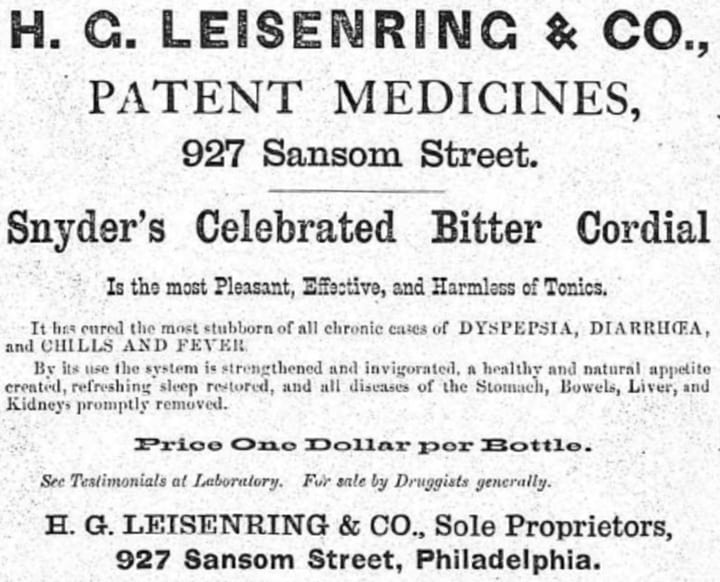
H. G. Leisenring & Co., Patent Medicines advertisement noting Snyder’s Celebrated Bitter Cordial, 927 Sansom Street – Philadelphia City Directory 1875
Harry was the sole proprietor of this product and operated as H. G. Leisenring & Co., patent medicines, 927 Sansom Street in Philadelphia. He marketed heavily during 1875 and 1876 in Philadelphia, New York and Indianapolis which surprised me. I believe the Snyder name came from Indianapolis as you will see from a few of the advertisements below. The Ring and Ham Bitters Bottles book notes the Philadelphia Public Ledger mentioning the product in 1869, which seems too early as absolutely nothing can be found prior to 1875. I am still looking. The book also notes a pontiled example. Somebody must have an example and I would love to add a picture to this post and quite frankly, have it in my collection.
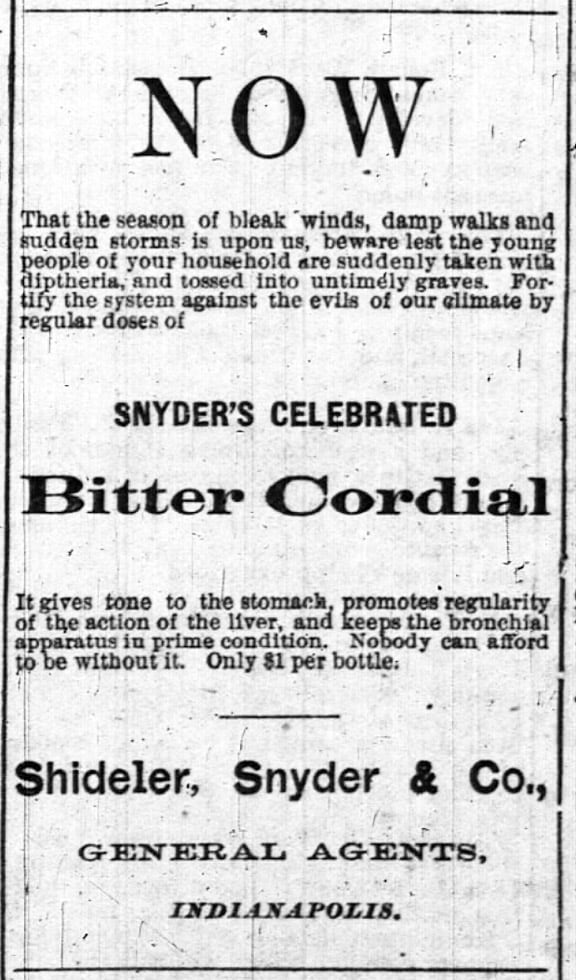
Snyder’s Celebrated Bitter Cordial – Shindler, Snyder & Co., general agents, Indianapolis – The Indianapolis News, 29 March 1875. Could this be the Snyder?
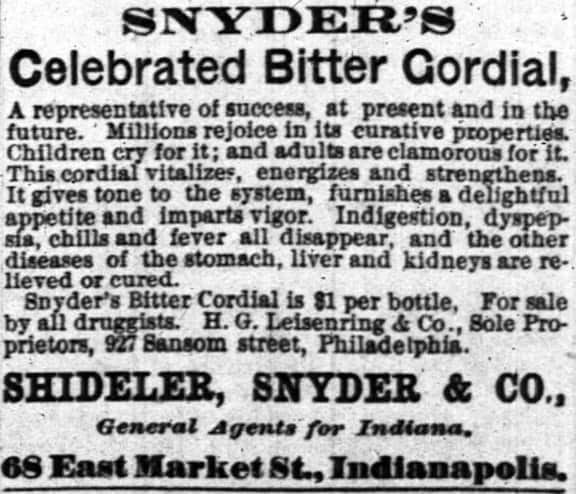
Snyder’s Celebrated Bitter Cordial – Shindler, Snyder & Co., general agents, Indianapolis – The Indianapolis News, 25 January 1875
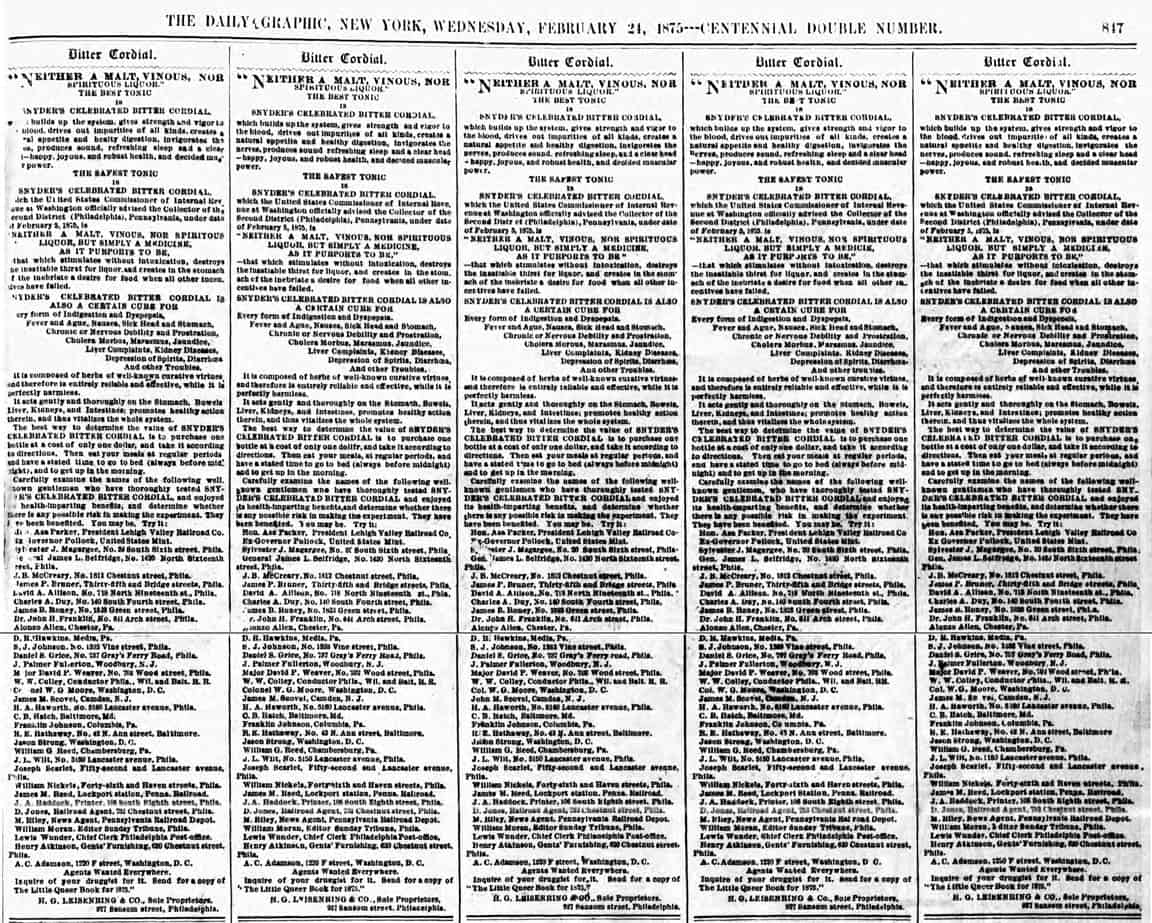
Gigantic 3/4 page repeating column advertisement for Snyder’s Celebrated Bitter Cordial, The Daily Graphic, New York, February 24, 1875
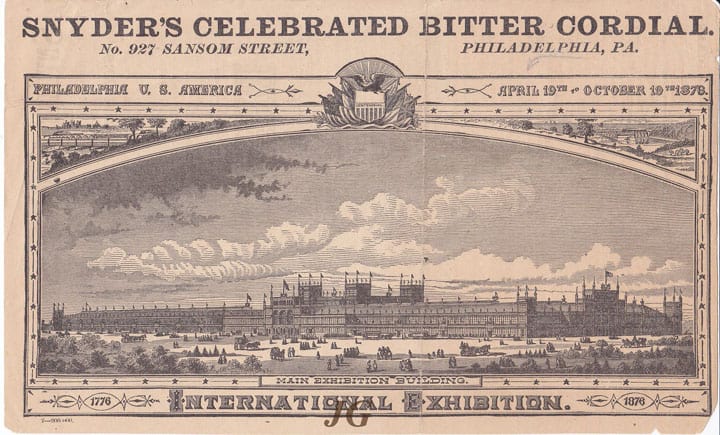
6″ X 9″ Handbill advertising Snyder’s Celebrated Bitter Cordial from the 1876 International Exhibition (see reverse side below) – Joe Gourd Collection
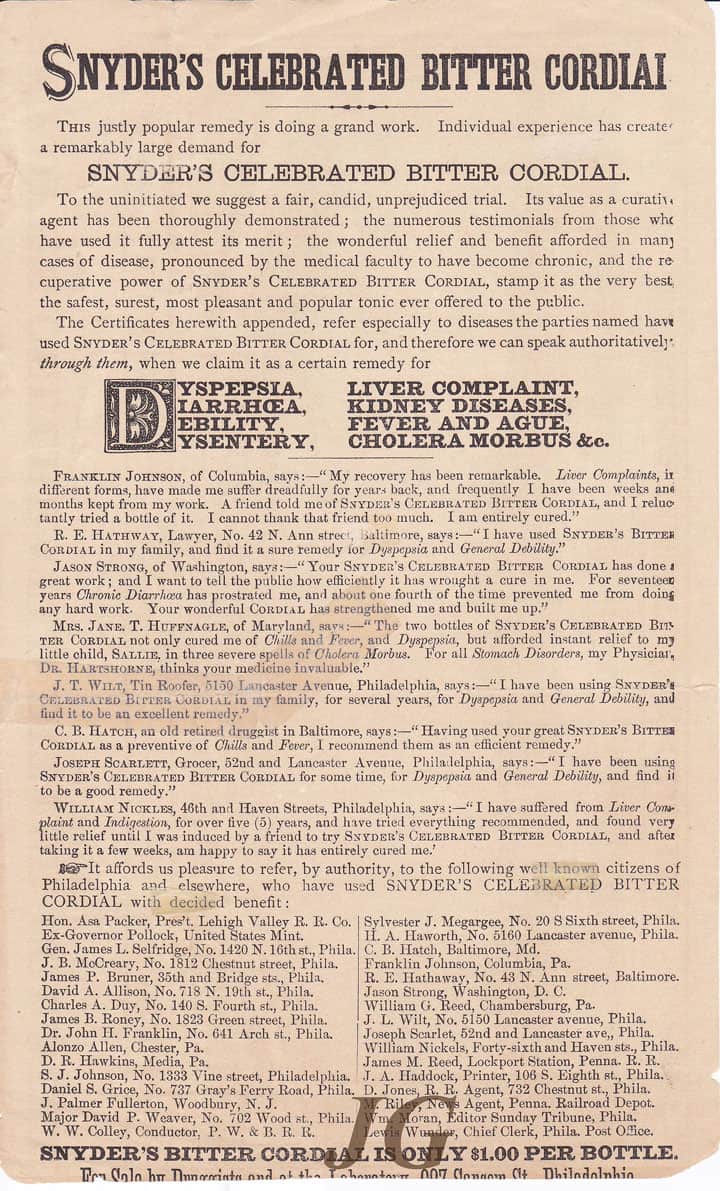
6″ X 9″ Handbill advertising Snyder’s Celebrated Bitter Cordial from the 1876 International Exhibition (see front side above) – Joe Gourd Collection
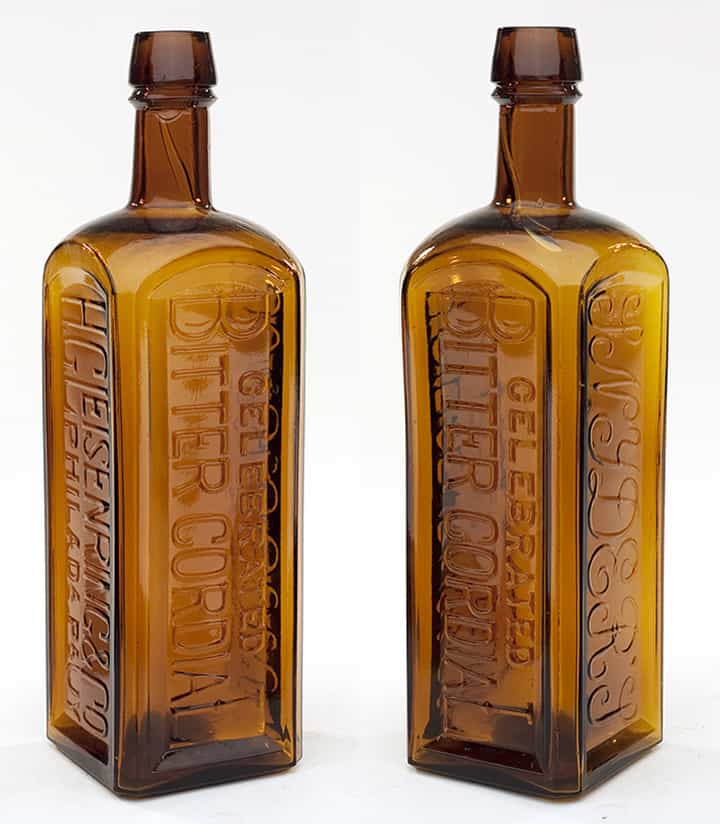
“SNYDER’S – CELEBRATED / BITTER CORDIAL – H.G. LEISENRING & CO / PHILADA PA”, America, 1870 – 1875. Bright, light golden amber, square with beveled corners, applied sloping collar with bevel – smooth base, ht. 9 5/8″, sparkling attic mint! R/H, p.508. A very unusual, and very rare bitters. It is noted in the Ring / Ham book, according to an 1869 ad in the Philadelphia Public Ledger, it “Cures everything”. Also, note the usage of several very different font styles. – American Glass Gallery Auction 14
The Carlyn Ring and W.C Ham listing in Bitters Bottles is as follows:
SNYDER’S // CELEBRATED / BITTER CORDIAL // H. G. LEISENRING & CO / PHILAD. PA // f //
9 5/8 x 2 3/4 (6 5/8) 1/4
Square, Amber, LTCR, Applied mouth, With and without Metallic pontil mark, 3 sp
Public Ledger (Philadelphia) June 12, 1869, Cures everything.
The new listing in Bitters Bottles Supplement 2:
S 136.5 SNYDER’S // CELEBRATED / BITTER CORDIAL // H. G. LEISENRING & CO / PHILAD. PA // f //
9 5/8 x 2 3/4 (6 5/8) 1/4
Square, Amber, LTCR, Applied mouth, With and without metallic pontil mark, 3 sp
FRE 593, TMS 387
Public Ledger (Philadelphia) June 12, 1869, Cures everything. See page 508 in Bitters Bottles and s2S 136.5
Broadside
S 136.5 SNYDER’S CELEBRATED BITTER CORDIAL, No. 927 Sansom Street, Philadelphia, Pa. Illustration Main Exhibition Building, 1776 International Exhibition, Philadelphia U. S. America, April 19th to October 19th 1776. Reverse primarily testimonials. Snyder’s Bitter Cordial is only $1.00 per bottle. For Sale by Druggists and at the Laboratory 927 Sansom St. Philadelphia. See page 508 in Bitters Bottles and s2S 136.5
Select Listings
1875: H. G. Leisenring & Co., The Philadelphia Medical Register and Directory
1875: book, The Results of Snyder’s Celebrated Bitter Cordial Have Been Incalculable …
1876: book, The Great Vegetable Remedy. Snyder’s Celebrated Bitter Cordial, H.G. Leisenring & Co – 1876
1876: The Little Queer Book for 1876. Snyder’s Celebrated Bitter Cordial (pictured above)
Read: In collecting Bitters, do you need the ‘S’?
Harry priced his product at $1 a bottle and said it cured just about everything under the sun including asthma, bowel complaints, cholera infantum, cholera morbus, cramps, debility, diarrhea, dysentery, dyspepsia, fever & ague, indigestion. kidney disease, liver complaints, loss of appetite, rheumatism, sick headache and sick stomach. The product sold quite well during this period and had acquired a considerable reputation. Harry Leisenring even issued an almanac with the odd name, “The Little Queer Book for 1876“, “Snyder’s Celebrated Bitter Cordial” (see below). Go figure.
Then came his failed wax exhibit at the 1876 World’s Fair. From the papers of Ulysses Simpson Grant, January 1 – October 31, 1876:
Also on May 23, H. G. Leisenring, Philadelphia, addressed USG. “The honor of your company is respectfully requested on the evening of May the 29th at 8 o’clock at the Hall 609 Chestnut St. north side, at the unveiling of the life-like representations of the Signers of the Declaration of Independence executed in wax full size, by distinguished artists…”
Harry then disappears when the financial component of the exhibit fails. I can not find but scarce information after this odd episode. Read article below.
2) H. G. Leisenring’s Steam Power Printing House
This H. G. Leisenring (Henry) owned a very well established printing company located at 237 and 239 Dock Street in Philadelphia. Many important prints, on a national basis, can be traced back to Henry G. Leisenring. The time period seems to center around 1865.
3) Dr. H. G. Leisenring of Wayne, Nebraska
This H. G. Leisenring (also a Henry) was a physician practicing around 1900 in Wayne, Nebraska. He once tried using Carrier Pigeons to alert him of ailing patients that needed house calls (see advertisement below). He also had a number of patents including one for a surgical chair (see below), horse bridle-bit and Trap net.
Major Clue (Douglas County, State of Nebraska)
P. S. LEISENRING, M. D., (Peter Shindel Leisenring) physician and surgeon, came to Omaha June 1, 1878, and has been in active practice ever since. He is a member of the State Medical Society and the Omaha Pathological Society. He was born in Sunbury, Pa., May 22, 1829, and educated at the Pennsylvania College, at Gettysburg, Pa. In March, 1852, he graduated from the Pennsylvania Medical College at Philadelphia and practiced at Altoona, Pa., before coming to Omaha.
He has been City Physician for the past three years and Secretary of the Board of Health. He was married at Hampton Furnace, Lehigh Co., Pa., January 31, 1856, to Emma E. Sigmund, a native of Berks County, Pa. They have ten children, Louisa S., Frederick G., Harry G. (could this be the Harry G. of the Snyder’s Bitter Cordial? Probably not.), Albert M., Lizzie N., Matilda, Bertha, Frank, Martin Luther and Sadie Bell. The Doctor is a professor of obstetrics and diseases of women in the Omaha Medical College. He is a Royal Arch Mason, K. of P., Medical Examiner for the U. B. of Pennsylvania, A. O. U. W., Northwestern A., F. & A. M. and Mutual Aid Society of Ohio. He is also a member of the Home Circle and Secretary of the Board of Health, director of the Y. M. C. A. and Douglas County Bible Society.

